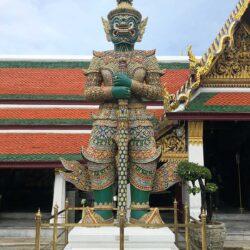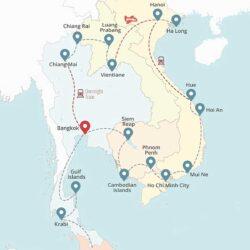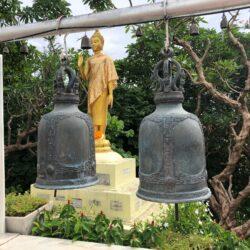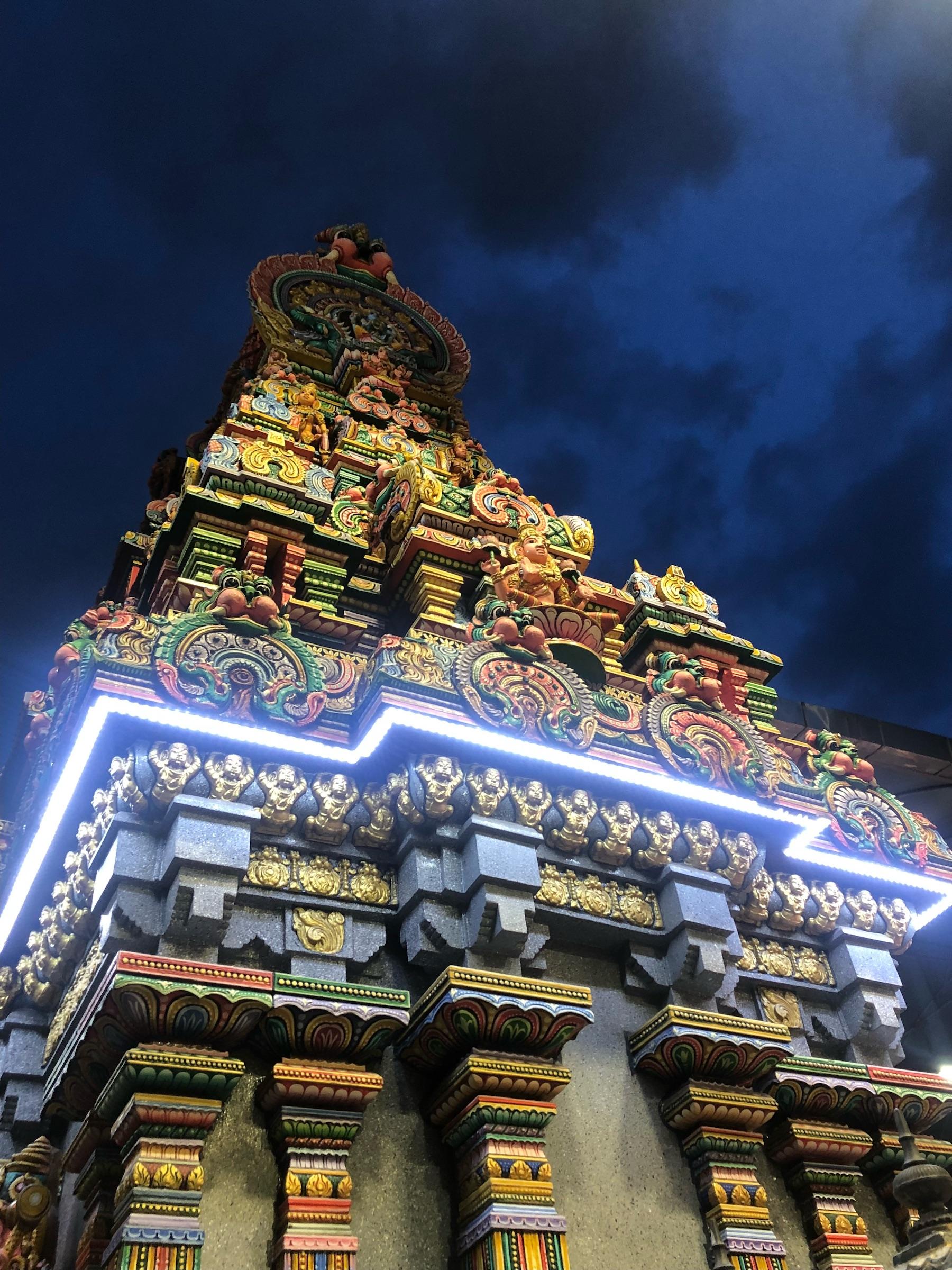
Non-Buddhist Bangkok
Compared to New York, one of the most diverse cities in the United States, and the place I happen to call home, Thailand is a fairly homogenous nation. 92% of the population is ethnically Thai and the vast majority identify as Buddhist; the northern regions are 98-99% Buddhist, while the south is generally 94-95% Buddhist. Bangkok wears the diversity crown with a whopping 7% of its population being counted as non-Buddhist. Who are the minority communities that make up this 7% and what added textures do their differences bring to life in the capital city? Are there outsiders within the Thai demographic and how do they express themselves in society? In this post, let’s take a cue from Godard and look at The Band of Outsiders: Bangkok Edition.
Ban Khrua & The Jim Thompson House
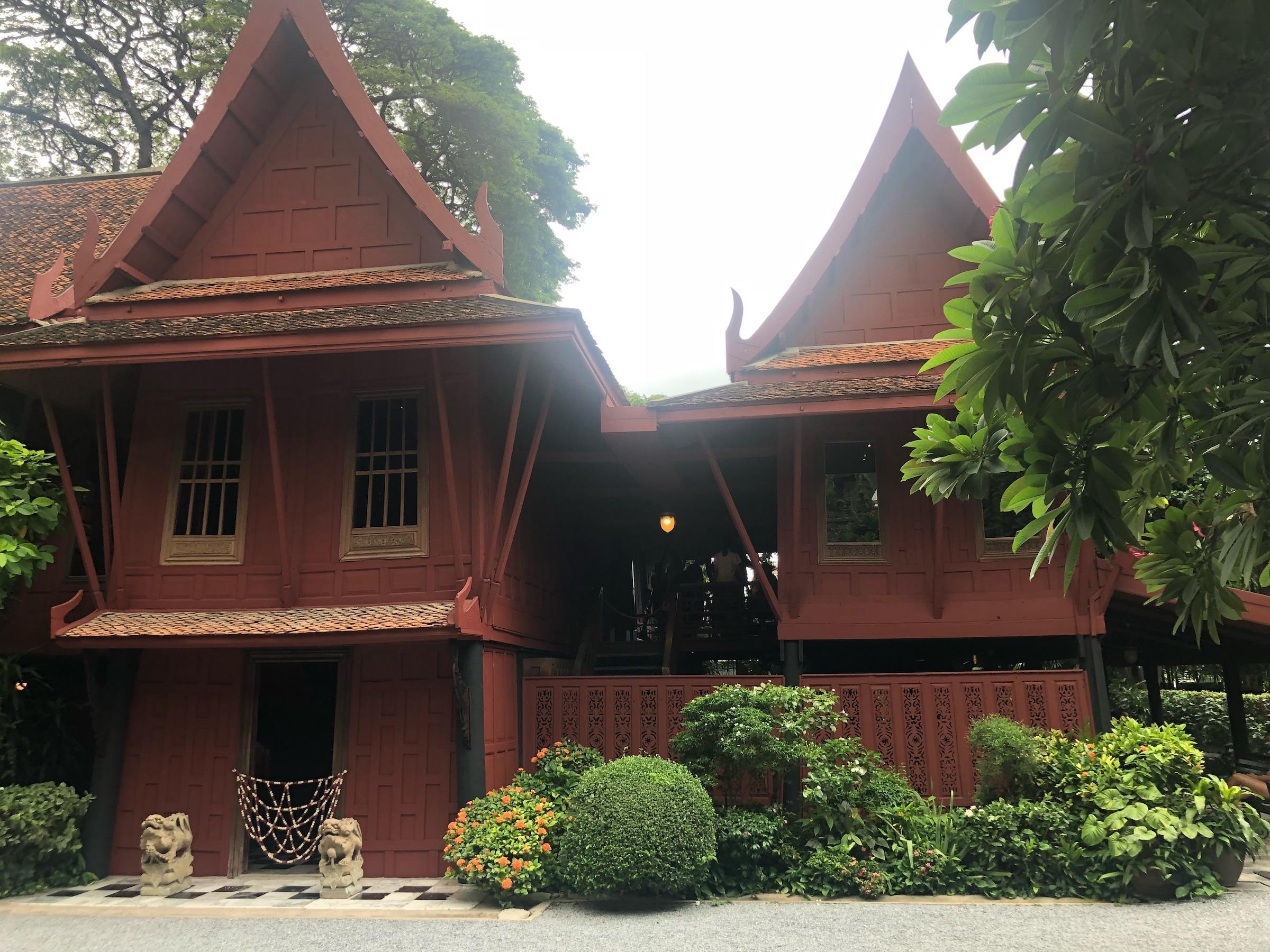
Ban Khrua (sometimes spelled Baan Khrua) is a small Muslim neighborhood that sits just north of Khlong Saen Saep, a canal that runs through central Bangkok. (Khlong is the Thai word for canal and you’ll hear it pop up when people are giving you directions.) A contingent of Cham Muslims fought alongside the Thai against the Burmese during the Ayutthaya wars in the mid-18th Century. To reward their military service, King Rama I provided housing for the group in what is now Ban Khrua. Three historic mosques still operate in the area, although Bangkok’s current Muslim population of 365,000 has branched out to other parts of the city as well.
Let’s put in a pin in Ban Khrua for now and jump halfway around the world to the state of Delaware in the United States. In 1906, a boy named Jim Thompson was born in Greenville, Delaware. Thompson would go on to graduate from Princeton, later even competing in the 1928 Summer Olympics in sailing events. He eventually settled down in New York where he joined an architecture firm (his favorite subject) and began designing homes for wealthy members of high society.
When World War II broke out, Thompson joined the military. Due to his high intelligence and knack for picking up languages, he was placed with the OSS, a precursor of the CIA. After being stationed in Europe and North Africa, Thompson was shipped off to Southeast Asia to assist in liberating Thailand from its Japanese occupation. Japan surrendered before he ever stepped foot in Bangkok, but Thompson decided to stay and help set up the OSS office in the Thai capital.
In 1947, Thompson was taking a stroll through Ban Khrua and noticed the pieces of fine silk for sale in every neighborhood shop. He had never seen silk woven quite like this before; vibrant colors and unique, detailed patterns were woven into each bolt of fabric. The Cham Muslims had passed down their traditional silk weaving techniques from generation to generation, but their industry had heretofore not been centralized. Thompson saw an opportunity and ran with it.
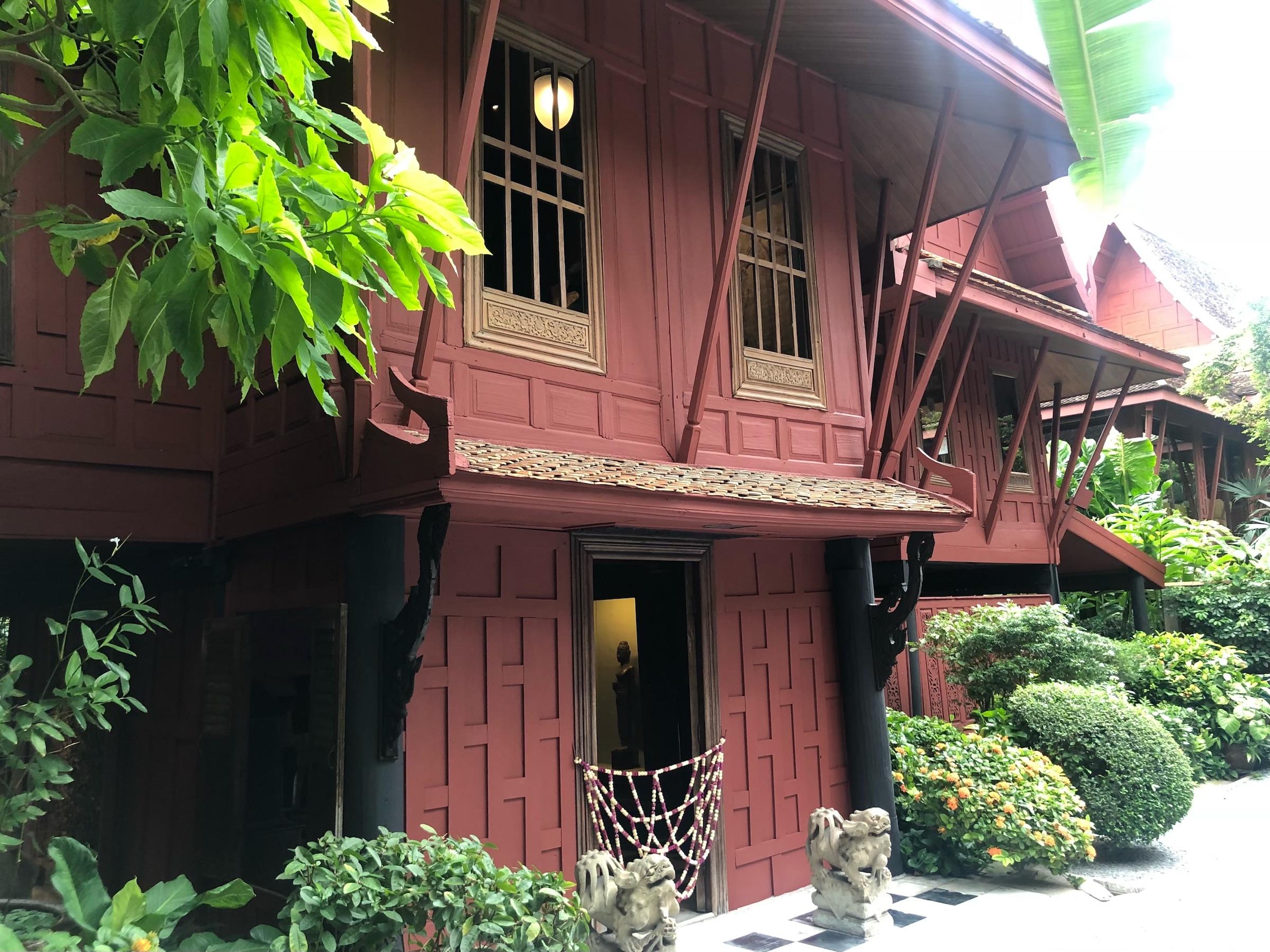
In 1948, Thompson founded the Thai Silk Company; he received his big break in 1951, when costume designer Irene Sharaff used Thompson’s silk fabrics to make the costumes for the new Broadway musical, The King and I, an adaptation of the memoir The English Governess at the Siamese Court. (Anna Leonowens was an Indian-born British writer who served as teacher to King Rama IV’s 39 wives and 82 children for six years. The musical, which is outlawed in Thailand for being false and offensive, is based on this bit of Thai history.) Sharaff, who would go on to win both the Tony and Oscar Awards for Costume Design for her work on the stage adaptation and film of The King and I, respectively, made Thompson’s silks a global phenomenon. Sales skyrocketed as the silk was shipped to New York, London, Milan, Paris and Rome. Thompson’s little enterprise was soon taking in $1.5 million dollars each year.
In his spare time, Thompson had become an avid collector of Southeast Asian art. He traveled around Laos, Cambodia, and Malaysia, purchasing pieces along the way. Thompson preferred “subtle” works rather than shiny golden Buddhas or jewel-encrusted swords. Many of the paintings he amassed were on wood, cloth or paper. Burmese statues and Chinese porcelain made the cut too, but his most famous possession was his dining room table, once used by King Rama V himself.
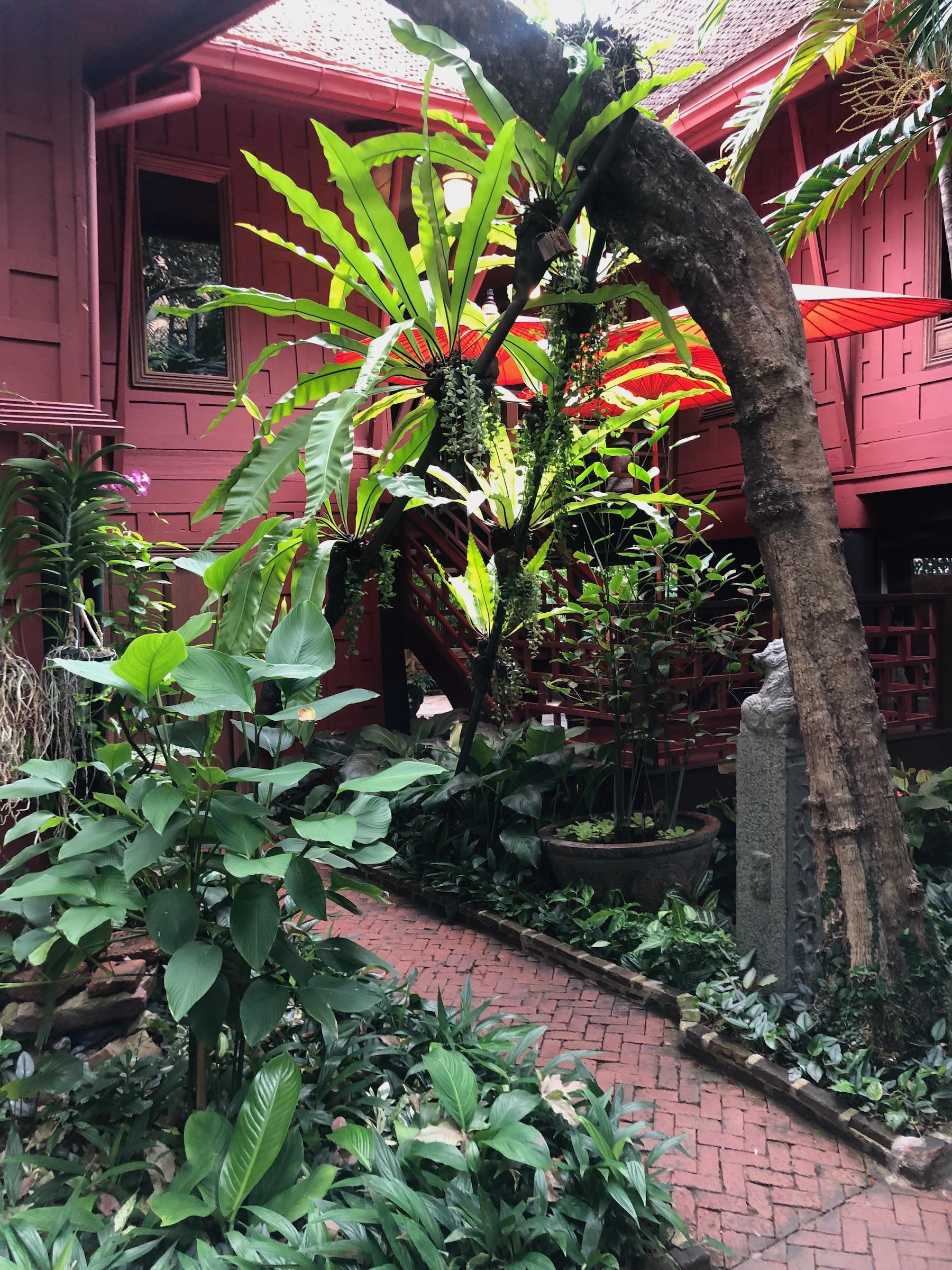
As his art collection grew, Thompson needed a larger home in which he could display his treasures. Digging back to his architectural days, Thompson purchased six traditional teakwood houses from Ayutthaya and Ban Khrua, each over 200 years old, which he took apart and reassembled into the home you see above, situated directly across the canal from Ban Khrua. The so-called Jim Thompson House was completed in 1959 and has some interesting features: the walls of the original houses were flipped so that the exterior facades now formed the interior of the residence and the entire structure was pieced together without using a single nail. The roof tiles were fired in a manner common during the Ayutthaya period and the house was painted red, just as it would have been those many centuries ago.

I’m sure some would argue that by today’s standards the Muslim community of Ban Khrua was a victim of Thompson’s cultural appropriation, and while it is true that Thompson made millions off their silk-making skills, he did care about his employees and created several worker protections that endured while he was alive. The most important of these was that he refused to built a factory for silk production and allowed the workers to maintain their cottage of industry status of working from their homes. (In post-pandemic 2023, where work-from-home is all the rage, people now might be more appreciative of this allowance!) Most of the weavers were women who had children to raise and homes to maintain. By permitting them to weave from home, family life was not disrupted. Thompson paid decent wages as well, lifting thousands out of poverty and establishing the Muslim minority as a new middle class.
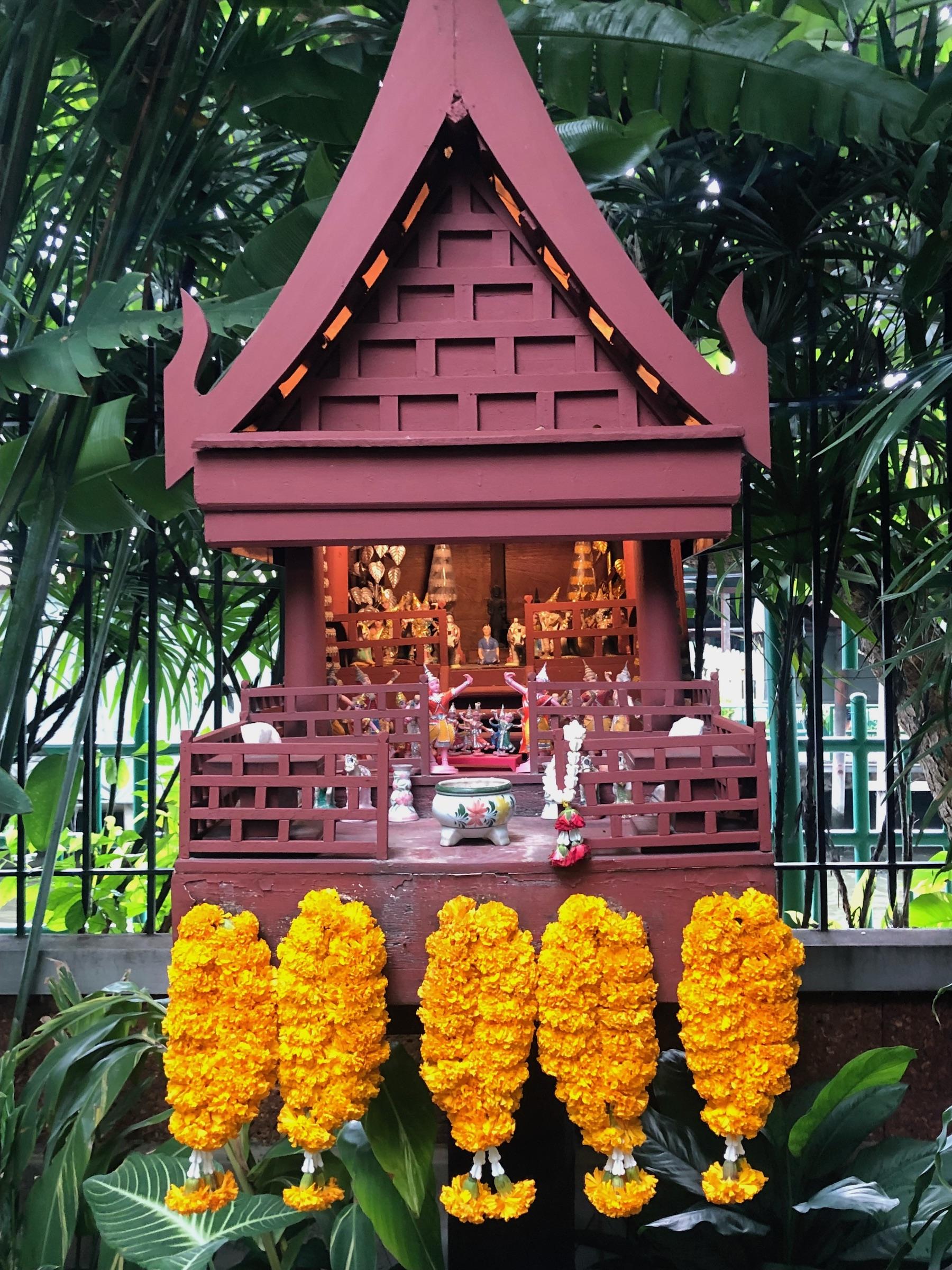
As if Jim Thompson didn’t live an extraordinary enough life, his death, or rather disappearance, was one hell of a final act. In 1967, Thompson went on vacation with three friends to Malaysia. It was a regular Sunday afternoon when Thompson informed his friends that he was going to take a walk before dinner. He departed from the hotel and was neither seen nor heard from again. A manhunt was mounted across Malaysia (and most of Southeast Asia); rewards were offered but he vanished without a trace. To this day, his body has not been found and we don’t know what happened to Jim Thompson. People have speculated that the CIA had him killed (he grew increasingly supportive of anti-US policies as he aged), while others have suggested that he was murdered by a business rival. It could have been an accident or a wild animal attack, but then his remains would have probably been found by now. Many believe he was abducted, but there were never any ransom demands or blackmail schemes uncovered after decades of investigation. Jim Thompson’s disappearance remains one of the great mysteries of Southeast Asia.
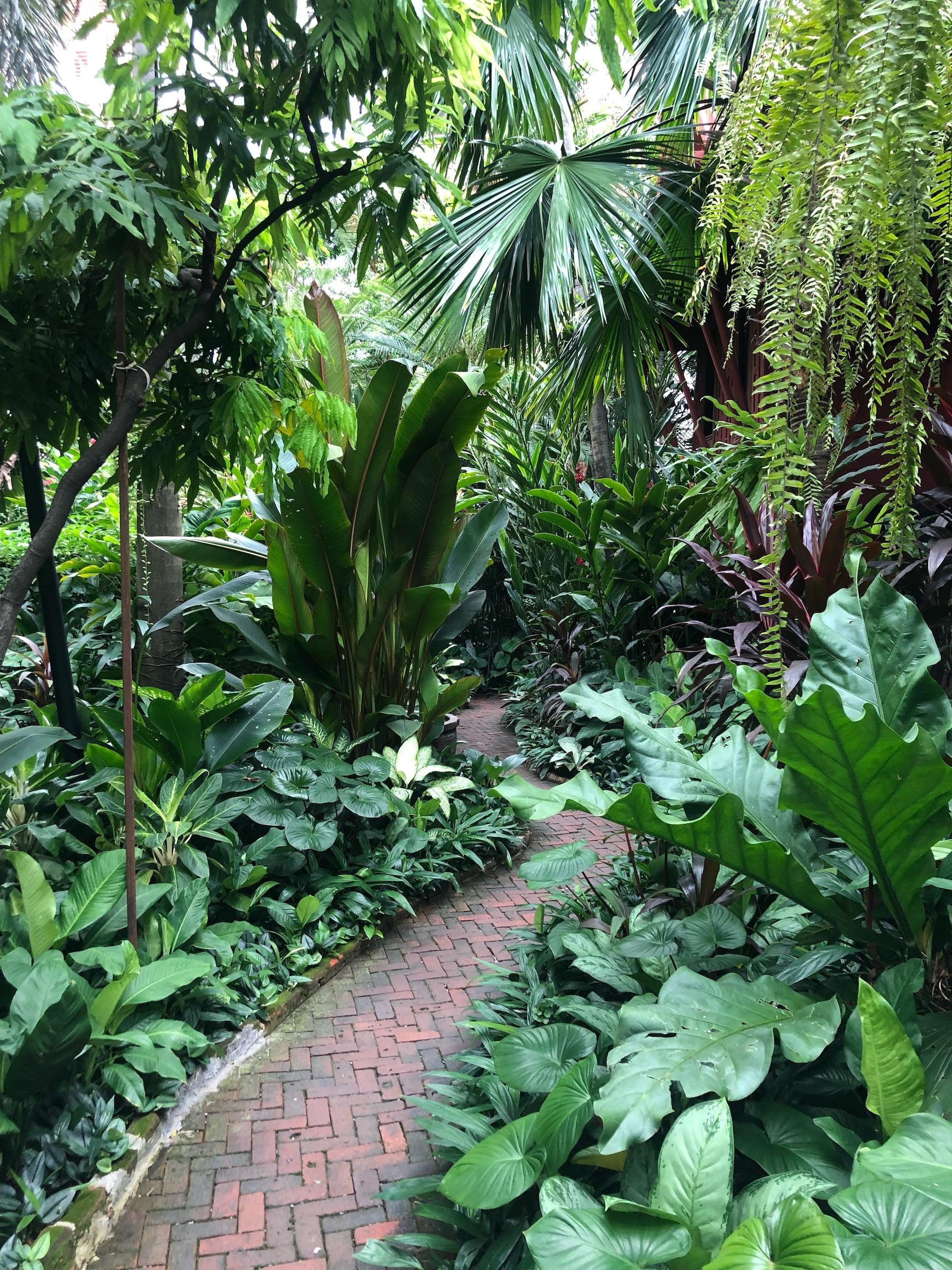
After Thompson was declared legally dead by the Thai authorities, the government seized his house and art collection and turned it into a museum. The silk business was turned over to his business partners, who promptly moved all production to a factory outside of Bangkok. Ban Khrua has never been the same since.
Today you can visit the Jim Thompson House, which has been preserved like it was at the time of his disappearance, and view his impressive art collection. You can photograph the exterior of the house and the gardens on the grounds, but pictures are strictly forbidden inside. A guided tour is mandatory; make sure you check the schedule carefully. Tours are given in Thai, English, Chinese, Japanese and French. There are only so many in each language on a daily basis and you don’t want to get stuck on a Japanese tour (unless you speak Japanese!) just because it’s the only tour left for the day. I recommend arriving about one hour before your preferred tour start time. This will allow you a chance to stroll the grounds and peruse the bookshop or partake in a coffee and snack at the on-site cafe.
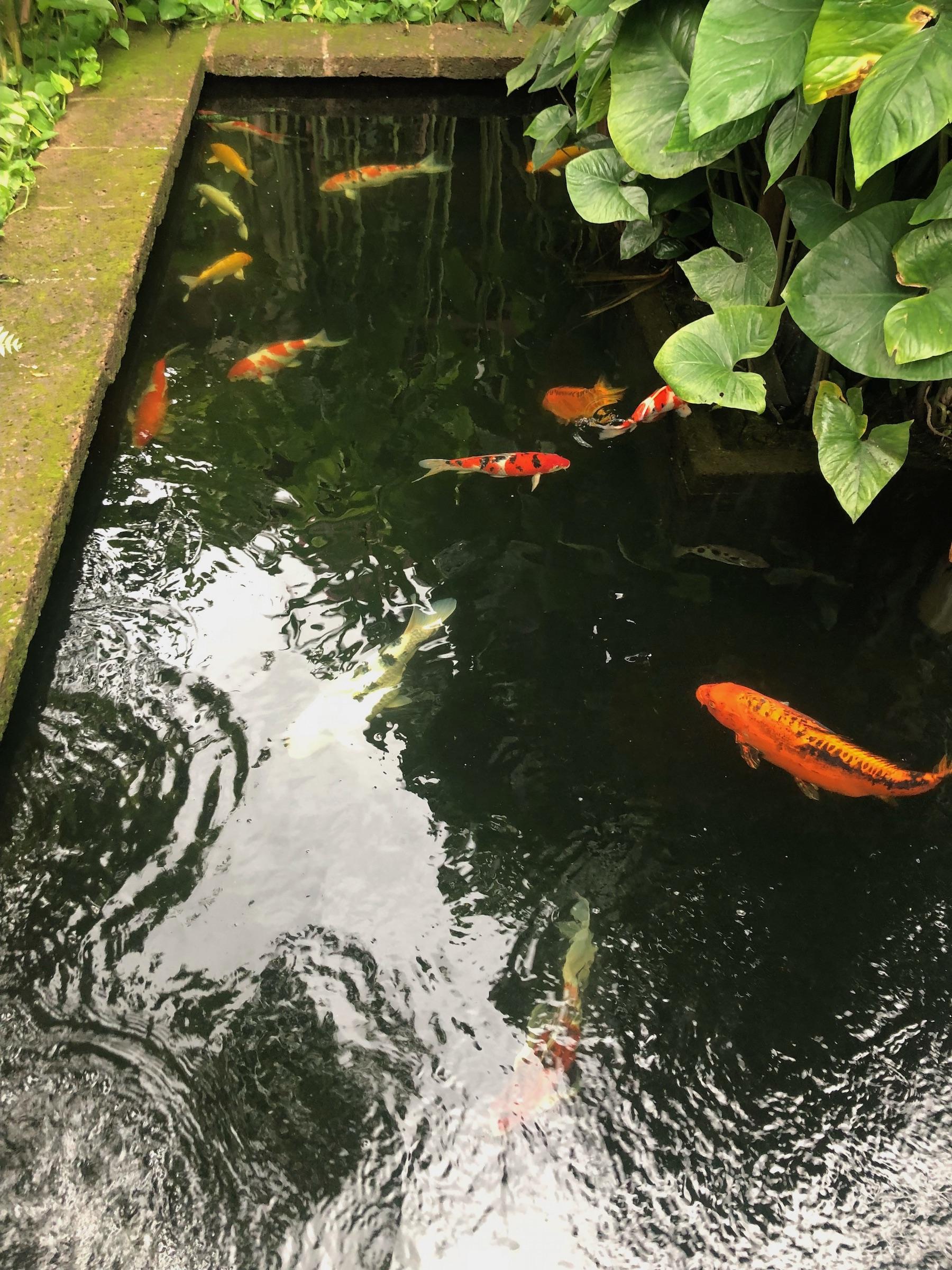
Street Art Along Khlong Saen Saep

The walkway along the Khlong Saen Saep that separates Ban Khrua from the Jim Thompson House has had its own “outsider” makeover in recent years. Street Art has exploded across Bangkok over the past 10-15 years, with the art form making waves across social media and in backpacker circles. These artists are the rebels of the Thai art community, but their popularity with the locals and tourists alike might move them from outside to mainstream status soon enough.
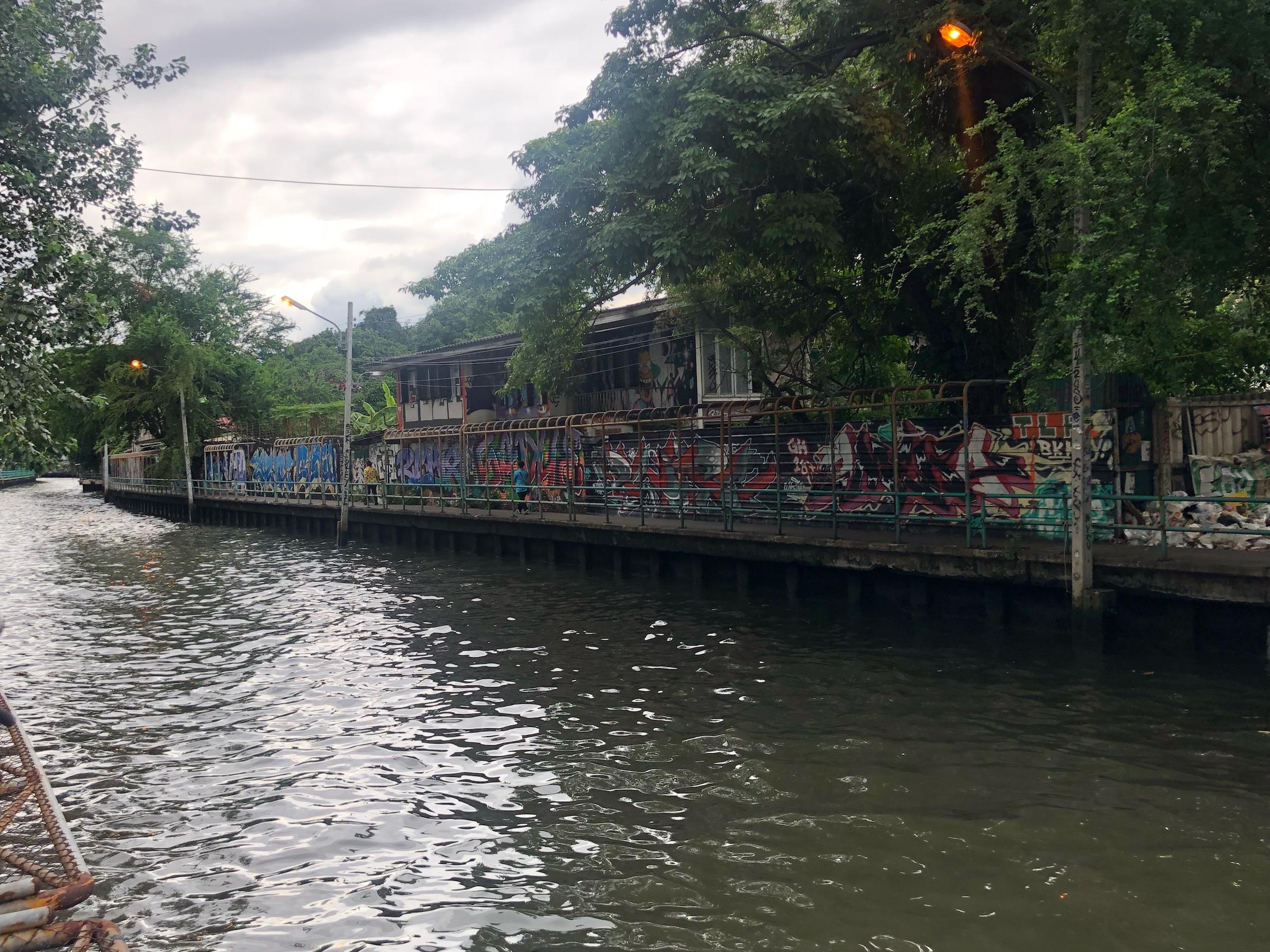
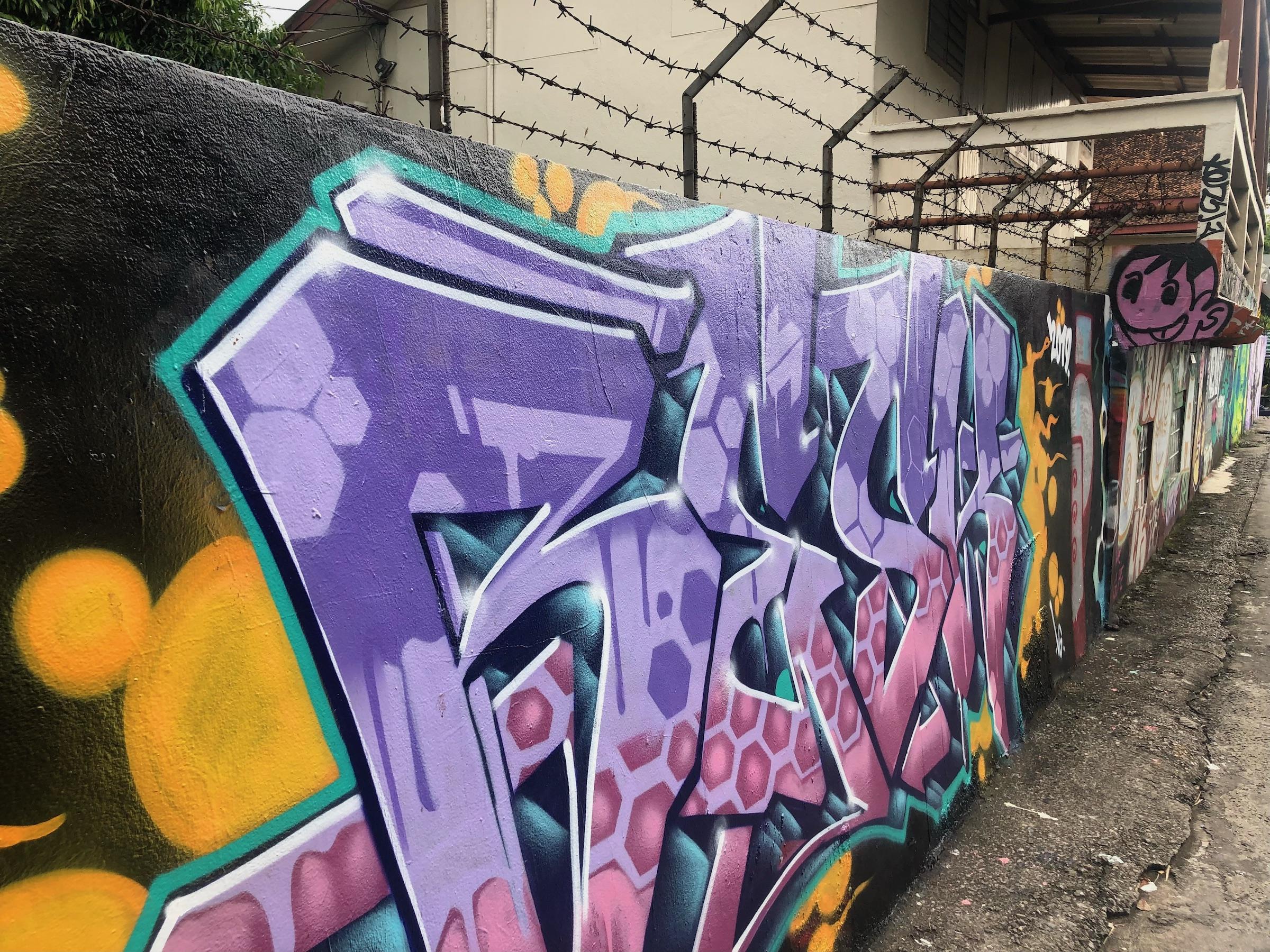
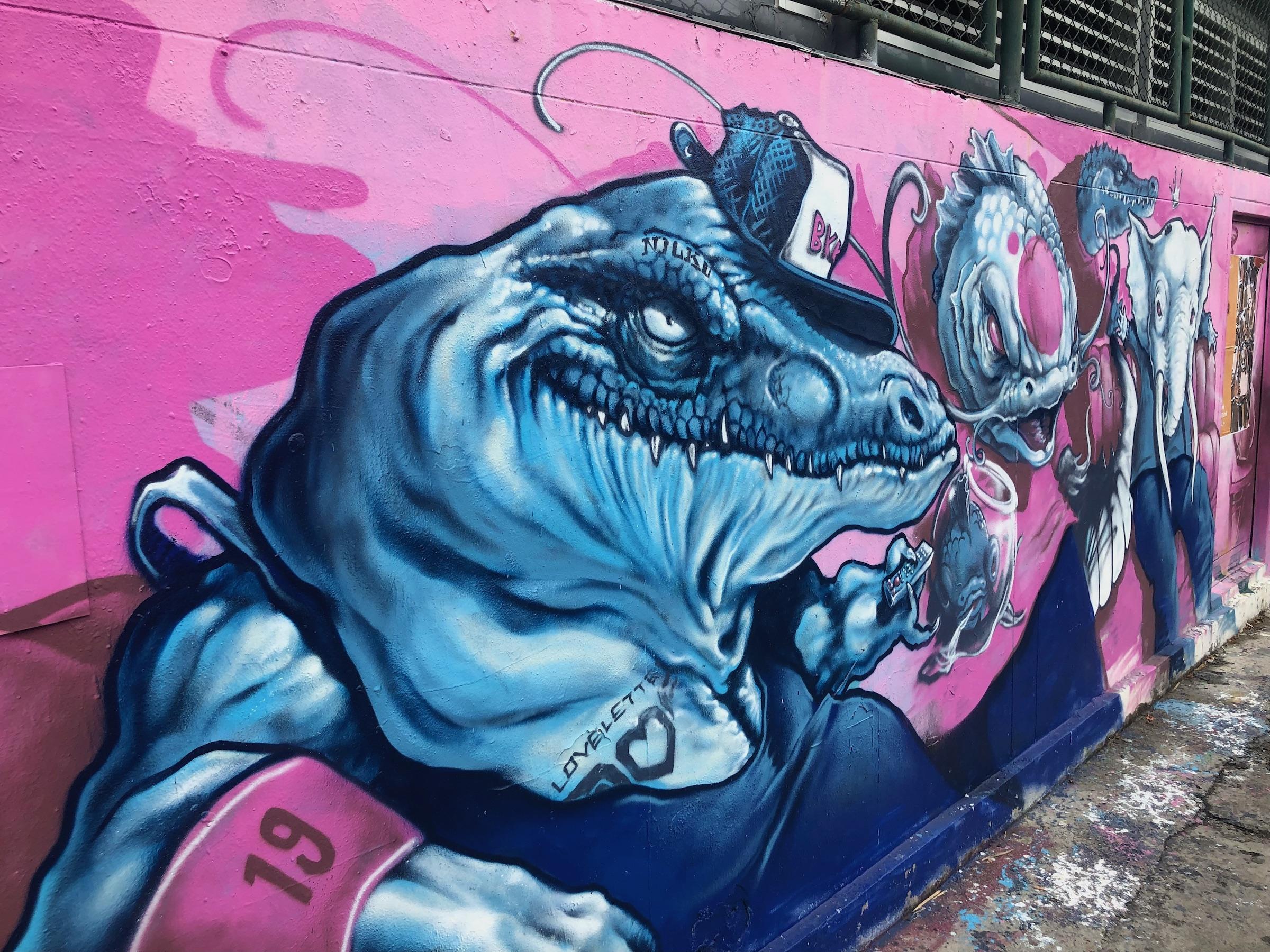
Siam Square

You might not instantly associate Siam Square with “outsider” status. This neighborhood, own by the prestigious Chulalongkorn University, is Bangkok’s main shopping and entertainment district. Today dominated by gigantic malls and high-end boutiques, this area was once a slum-like residential neighborhood full of wooden houses. A fire ripped through the quarter in the 1950s and the university decided to replace the homes with an open-air shopping mall. Development continued to accelerate in the 200os; today there are over 4,200 shops in Siam Square. (There are also over 30 schools that offer tutoring courses in anything from English and Thai to math and science.)
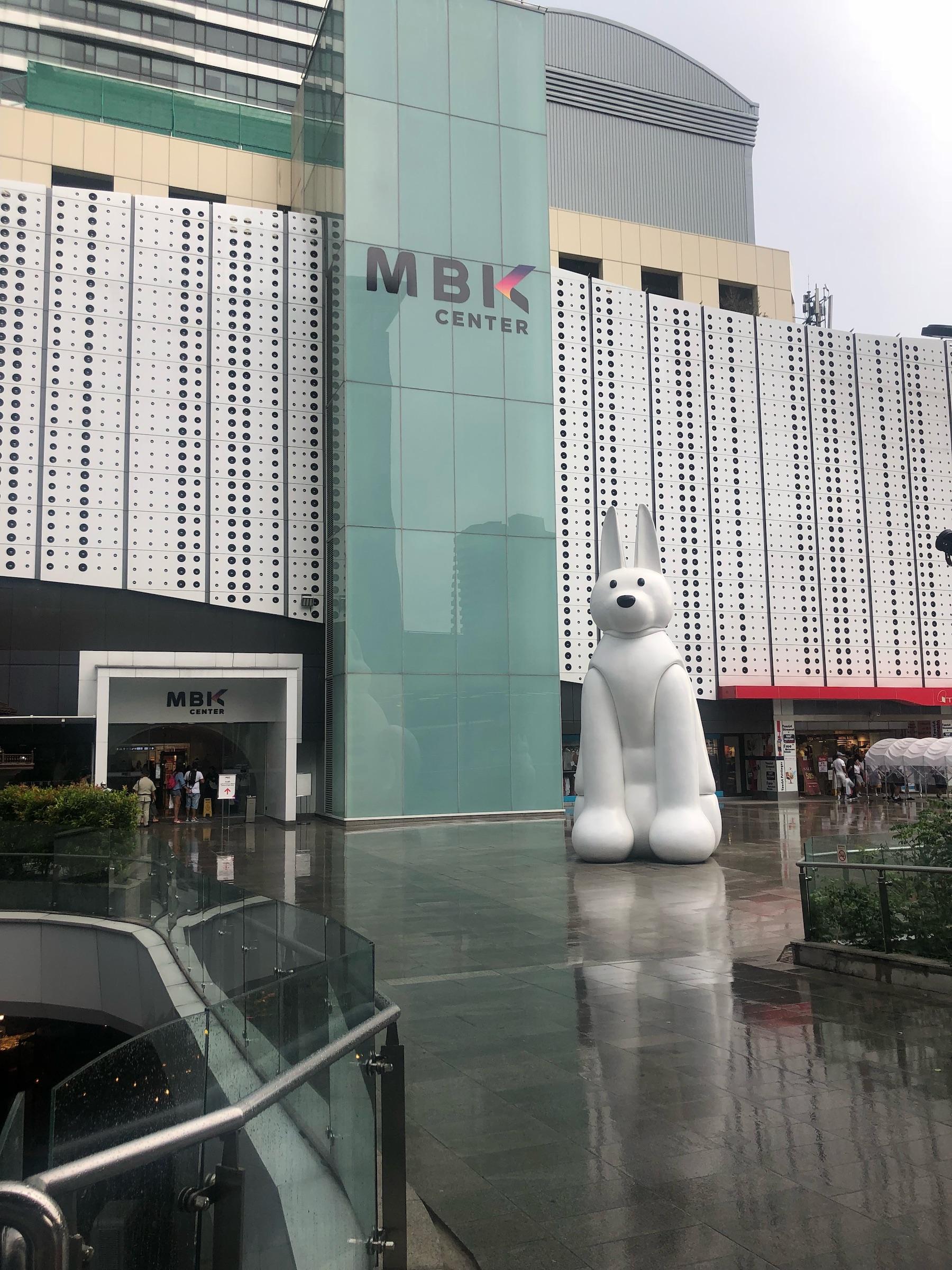
A lot of bloggers and backpackers rave about the malls in Bangkok and often list the MBK Center as a “must-see” destination in the capital. It’s size puts the Mall of America to shame, but honestly…it’s just a mall. I guess I can see the appeal in the budget-friendly food court, but the rest is just store after store. This was one of those places that left me scratching my head of why it is so highly-touted and certainly would put it on my “skip-it” list.
Bangkok Art & Culture Center (BACC)
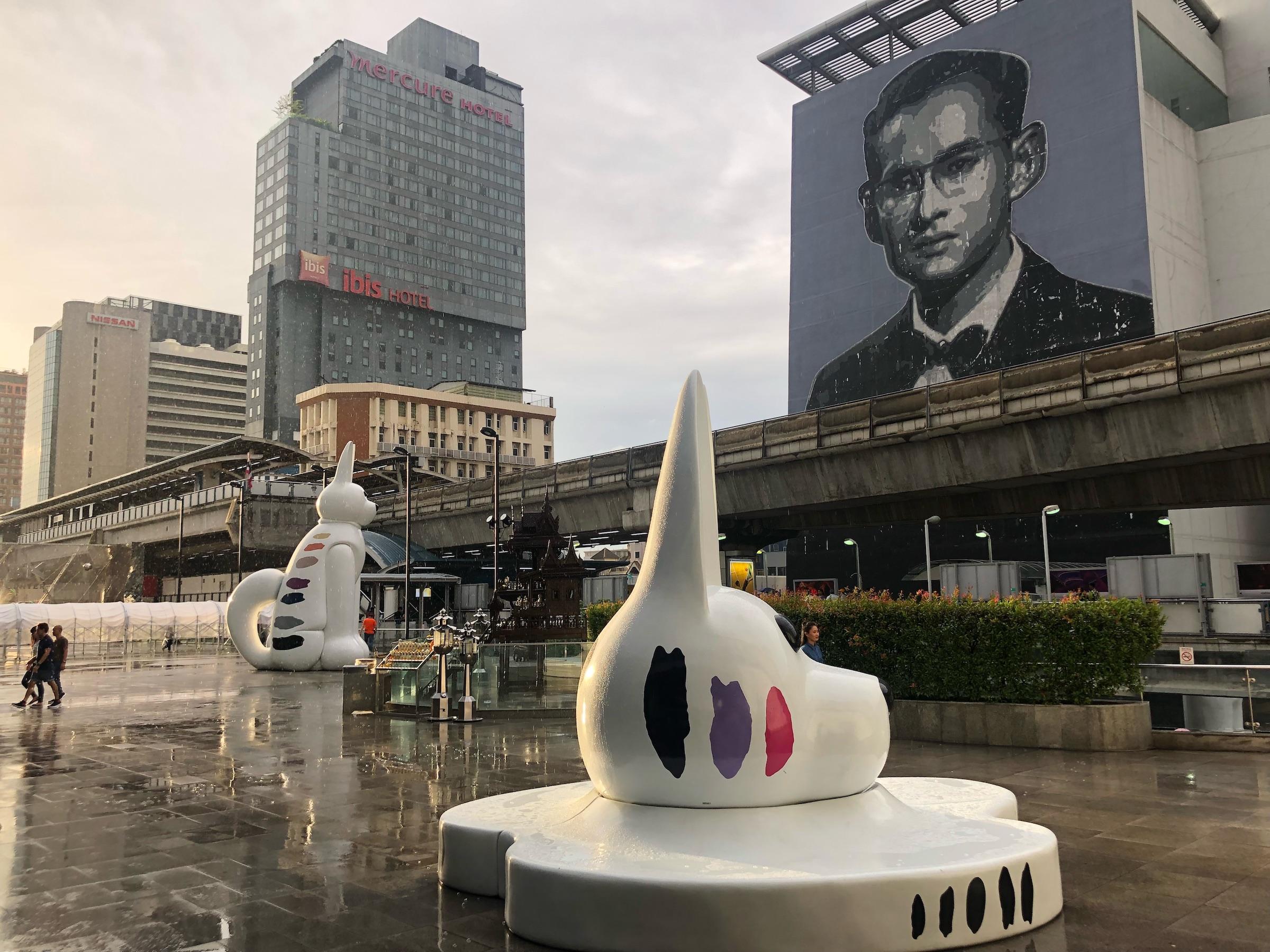
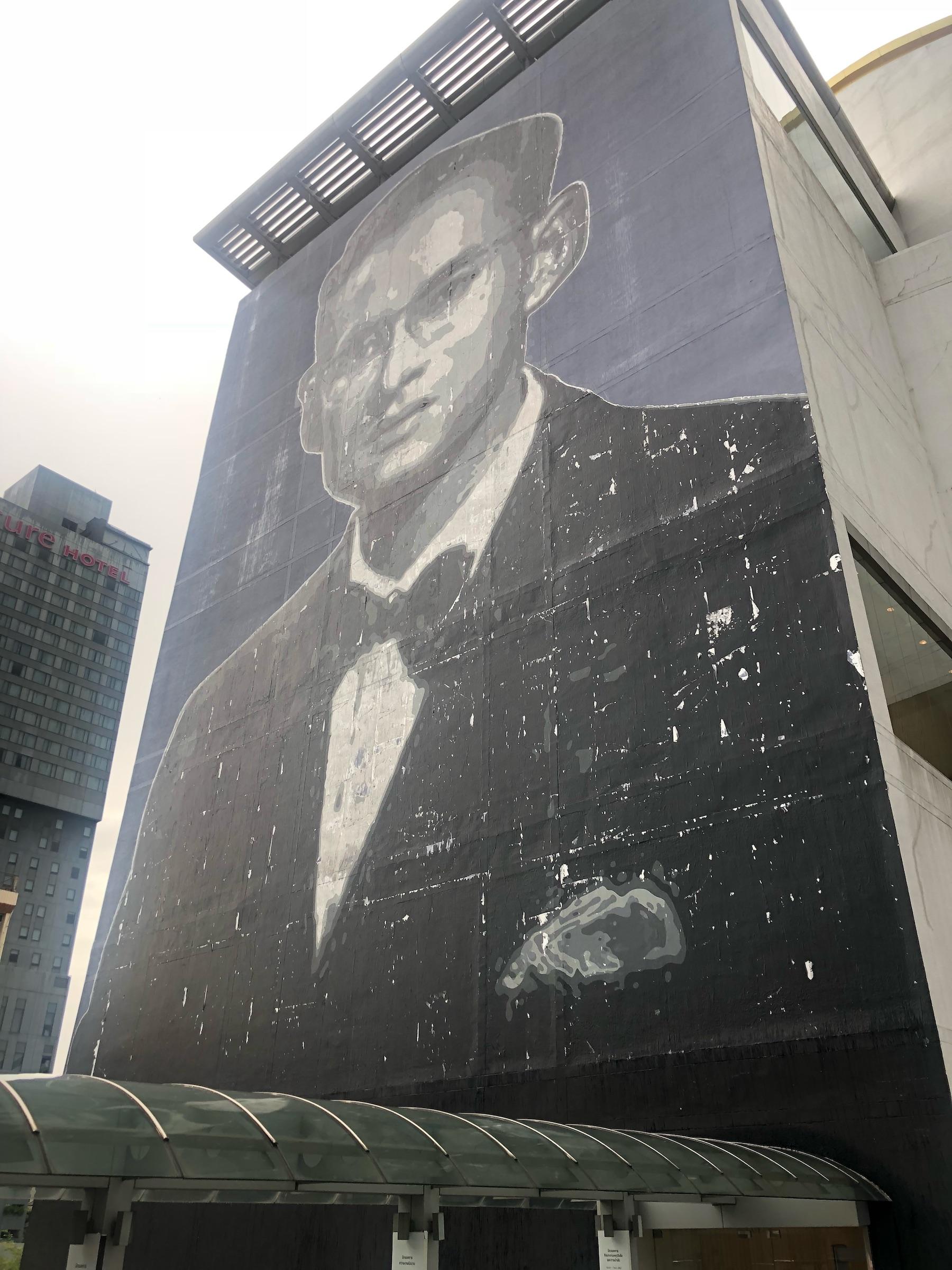
The first thing you notice about the BACC is the enormous mural of the late king, Rama IX, on its side. The piece measures 34m x 25m (111ft x 82ft) and is part of the project “In Remembrance of H.M. King Bhumibol: The Sumpreme Artist,” organized by Dr. Apinan Poshayananda to honor Rama IX and his prolific support of the arts in Thailand. This portrait is not actually painted on the side of the building as it appears to be. Created as a collaboration between street artists and art students at five schools in Bangkok, the design was partitioned into 39 panels (the 40th was removed to accommodate the building’s entrance) and each paper panel was painted off site. The artists then used a wheat-pasting technique to adhere the panels to the BACC; to create wheat paste, you mix whole wheat flour with water and bring the mixture to a boil, removing all lumps. After the paste cools, you can use it to hang posters or art on the sides of buildings much like you could hanging wallpaper in your own home.

Often times, when an institute is billed as an art museum/cultural center combo, only lip service is paid to the “cultural center” side of things. This isn’t the case at the BACC. Over its eleven circular levels, you will find cafes, bookshops, art supply stores, theaters for film and live performances, workshop space to nurture budding artists and more. There are commercial galleries where artists attempting to establish their name on the Bangkok scene can sell their works as well. The top floor is reserved for rotating contemporary art exhibitions.
As far as the architecture is concerned, well let’s just call it…an homage to the Guggenheim. Officially the design firm who drew up the plans wanted an atrium that utilized natural light and would provide an airy space to showcase the art.
Make sure to look out for the monthly Bangkok Art Map (BAM). Printed by the BACC, this brochure features an exhaustive look at all the gallery openings and art shows across the city. If you happen to be in Bangkok for several weeks (or months) and really wanted to delve into the art world here, the BACC would be a great resource for you to use.
Thailand and Japan Art Brut: Figure of Unknown Beauty
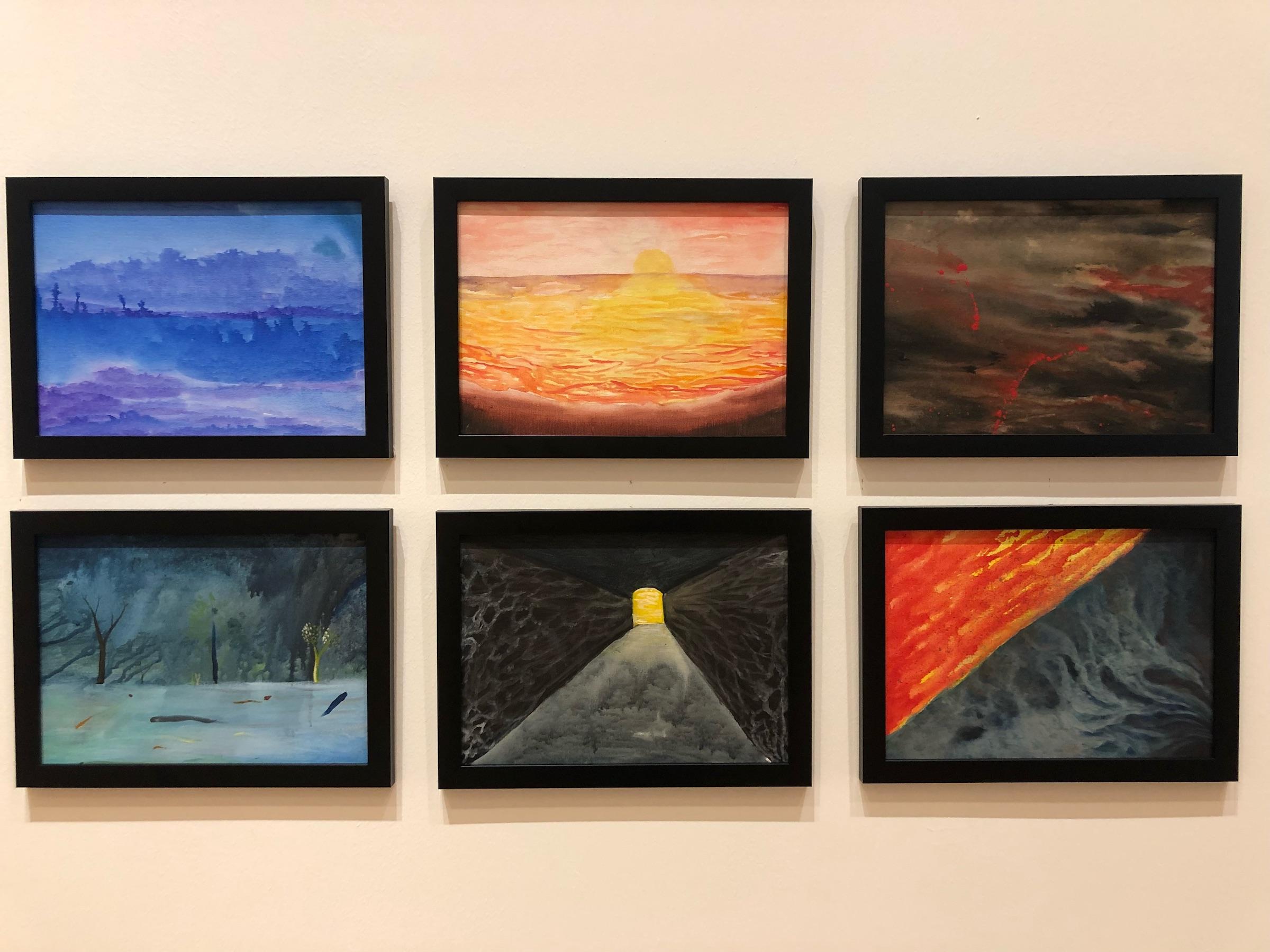
Art Brut just may be the ultimate outsider art. The term was coined by French artist Jean Dubuffet, but the study and collection of Art Brut began several decades earlier in 1920s Germany. Art Brut is a genre of art that is created by non-professional artists. The art is raw, crude and often belies the creator’s inexperience. Art created by the mental ill in psychiatric hospitals, the elderly in nursing homes, hermits and recluses, children and inmates in prison all may fall under the umbrella of Art Brut.
German artist Hans Prinzhorn printed the first known volume of Art Brut, Bildnerei der Geisteskranken (Drawings of the Mentally Ill) in 1922. He spent years in psych wards, collecting the paintings patients used to express their inner feelings. Dubuffet was moved by these works and declared Art Brut the purest form of art and creative expression. This was art made for art’s sake and not to make money or be entered into a competition. Most Art Brut creators never knew their works would be shown in a museum; children have found paintings stowed away in an attic after their parents have died or a warden discovers carved sculptures after a prisoner has been released from jail. These artists are self-taught and “naive” to the methods of formal artistic training. There is no adherence to the tenets of art movements or styles. In many ways, Art Brut is accidental art; the only rule is there are no rules.

The BACC, in collaboration with institutes in Japan, curated a collection of Art Brut from 51 Thai and Japanese artists. The Art Brut that Prinzhorn and Dubuffet extolled was primarily from European sources. With “Figure of Unknown Beauty,” the BACC is allowing the world to see Asian Art Brut en masse for the first time. Above you see an inmate’s depiction of prison as a fiery inferno, but you will notice that path continues on the other side, if the inmate is able to survive the flames.

Repetition, perhaps stemming from boredom, is often the root of an Art Brut piece. Here the pop-able bubbles of a ream of bubblewrap have been colored with marker in a repeating pattern. Mainstream culture will always try to assimilate artistic trends into marketable, commercial ventures. For example, if Andy Warhol had colored this bubblewrap to hang at a gallery or in a museum, the makers of bubblewrap would quickly start selling patterned bubblewrap (at a higher price) to the consumer. The creators of Art Brut are not part of the mainstream culture and have no desire to join it. They are not influenced by its pressures or whims. There is no commercial angle behind their art.
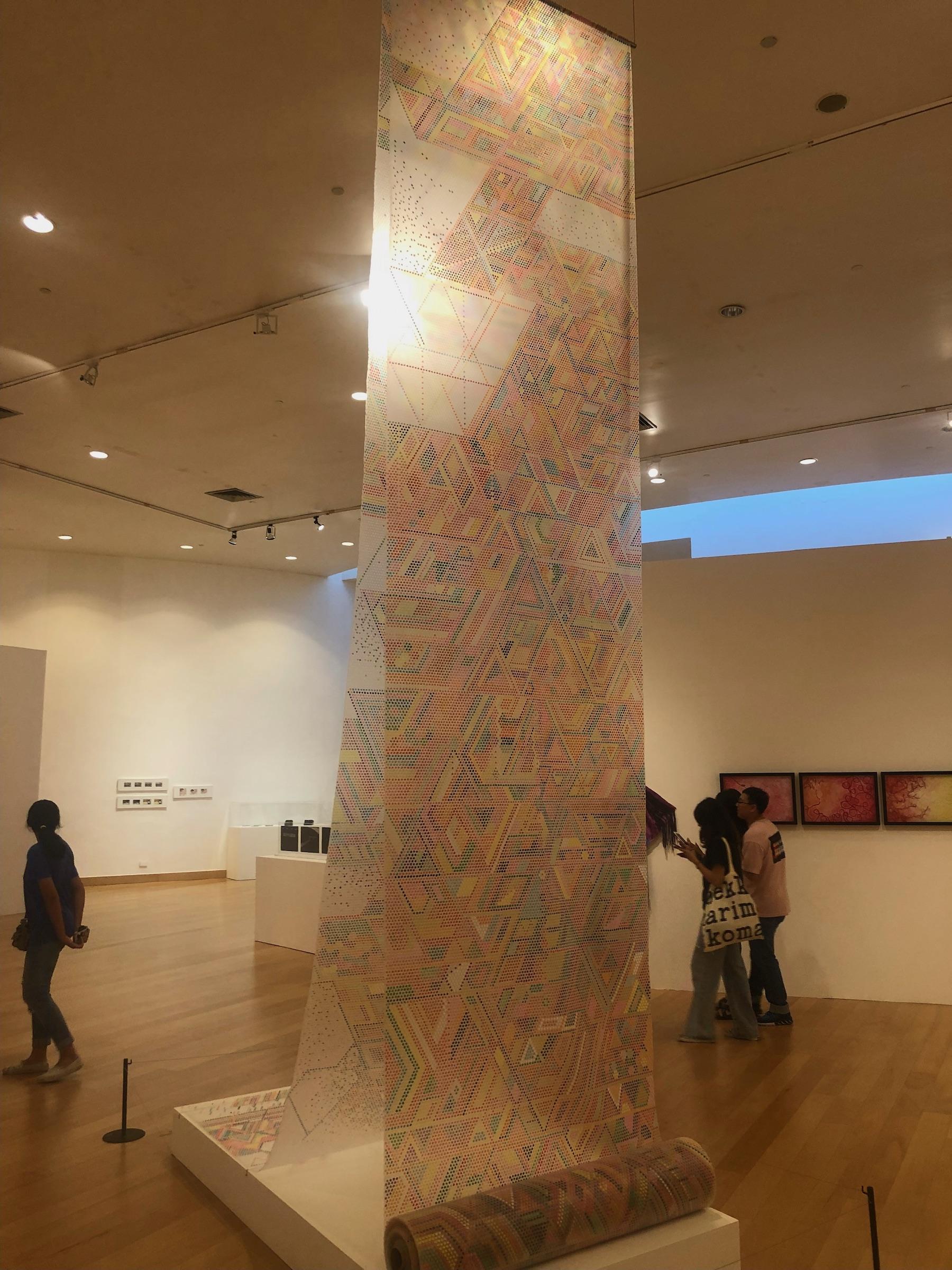
Up close, the bubblewrap art might not look like much, but when you pull back, you really can appreciate the artist’s intention. Creating this bubblewrap took as much time and pain-staking attention to detail as Jim Thompson’s silk weavers devoted to their craft. We’re so indoctrinated to the commercialization of art that looking at this roll of bubblewrap, you would be forgiven if your first impulse would be to say, “someone could sell that and make a lot of money.”

Creators of Art Brut usually do not seek out the specific mediums in which they form their pieces, but rather make do with the raw materials that are readily at hand. If you’re in prison or are a reclusive shut-in, you’re not going to be able to run over to the art supply store to buy and easel and paint set. Still, there are “amateur” artists who do make a go of more traditional paintings/drawings. This work is still done for themselves, perhaps as a form of art therapy or way to express past traumas. Even when Art Brut utilizes a traditional medium like oil on canvas, as seen above, it is still a pure bit of creative self-expression.
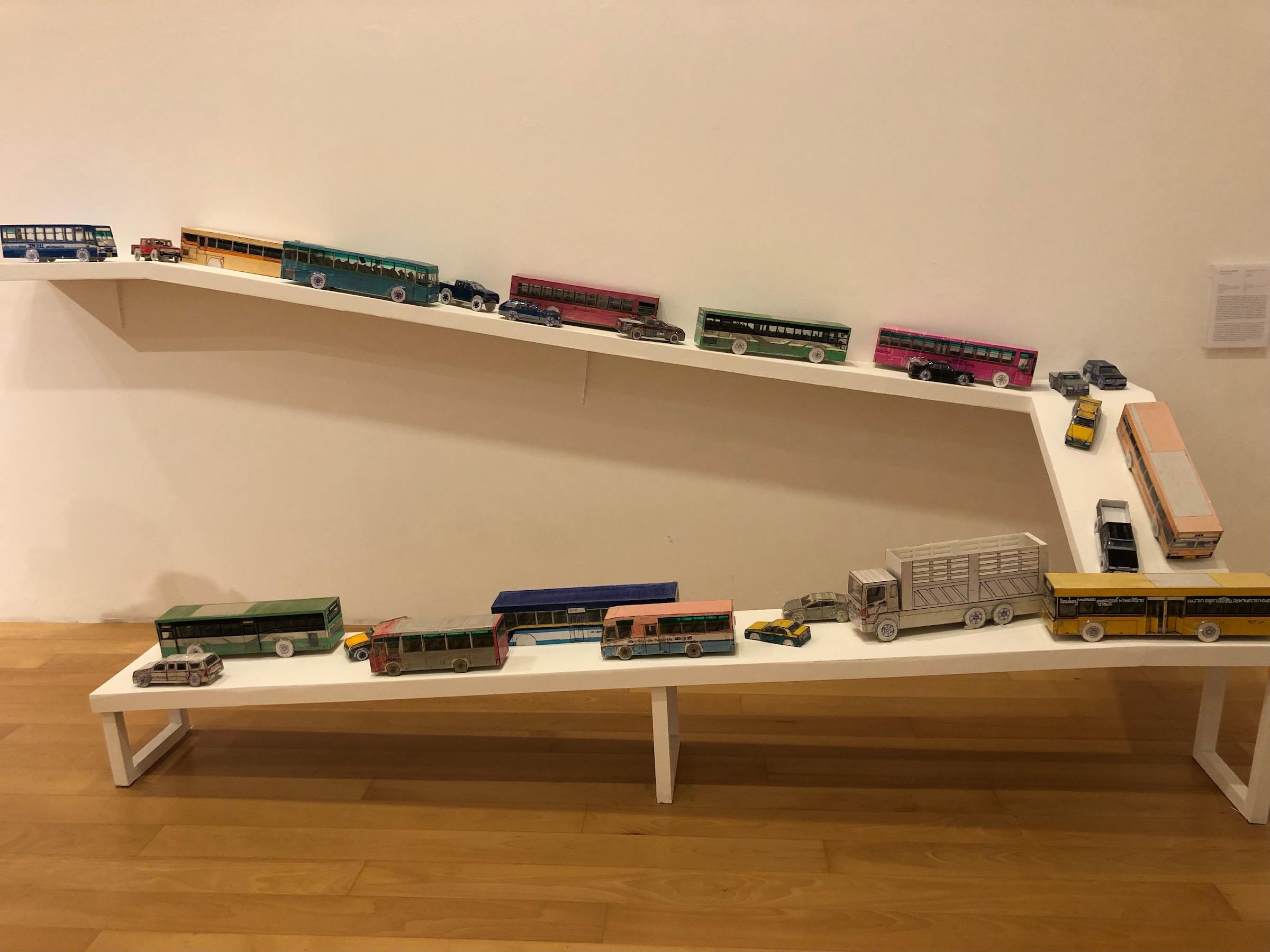
These vehicles were made by a senior citizen interested in creating exact replicas of different modes of transportation in Thailand. Each truck, bus or car was made from a single sheet of white cardboard that was then folded, cut and detailed with remarkable precision and level of detail. This Art Brut is a labor or love, but also a pride and joy.
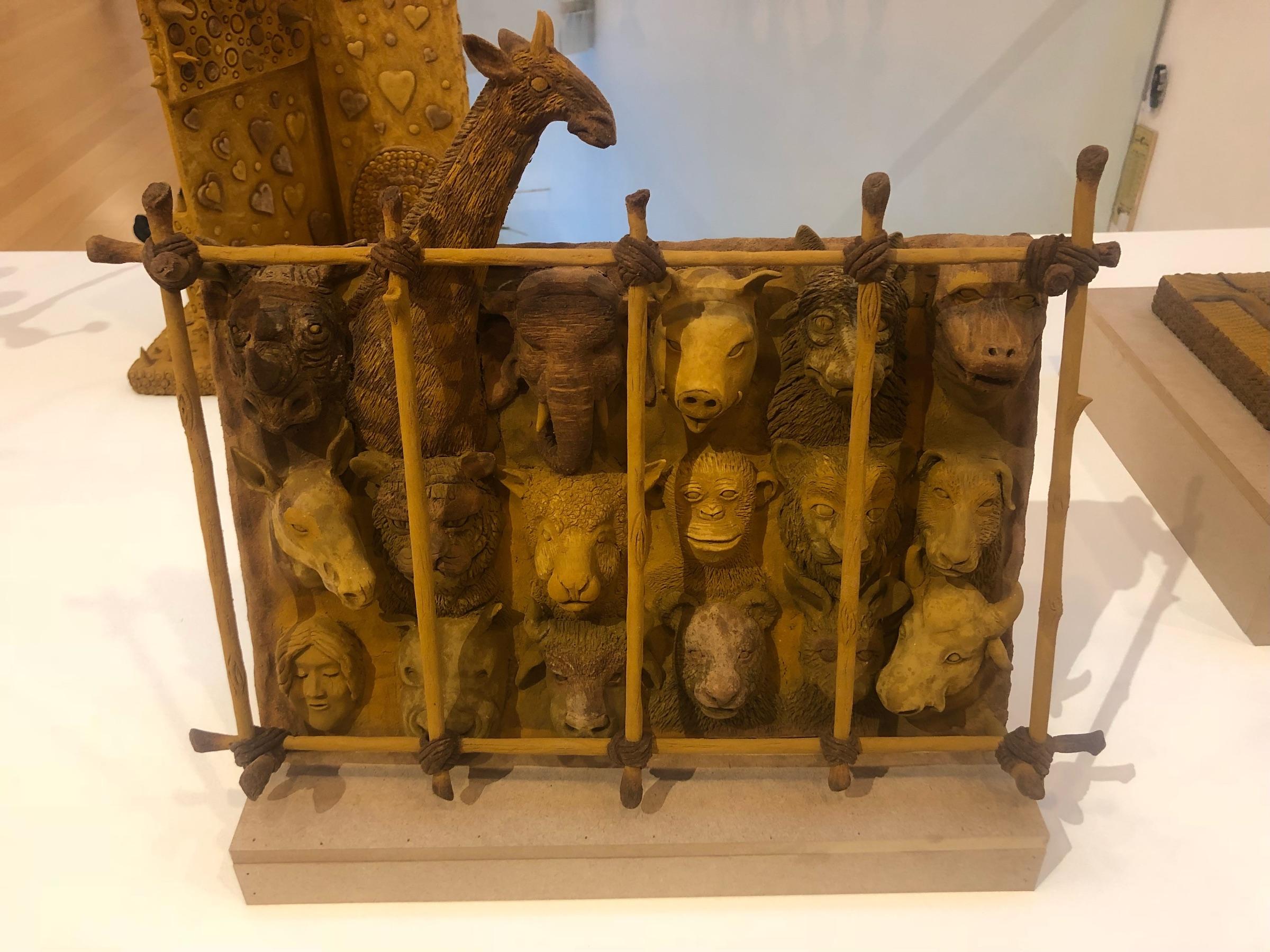
This piece was made completely from sawdust and paste in a Thai prison. The artist depicts a menagerie of animals (and one human face) locked up behind bars, staring out at the free world on the outside. As the debate rages on whether prisons should be a vessel for rehabilitation or act as a hammer of justice, this Art Brut makes a strong case for the powers of artistic expression in the most limiting of situations.
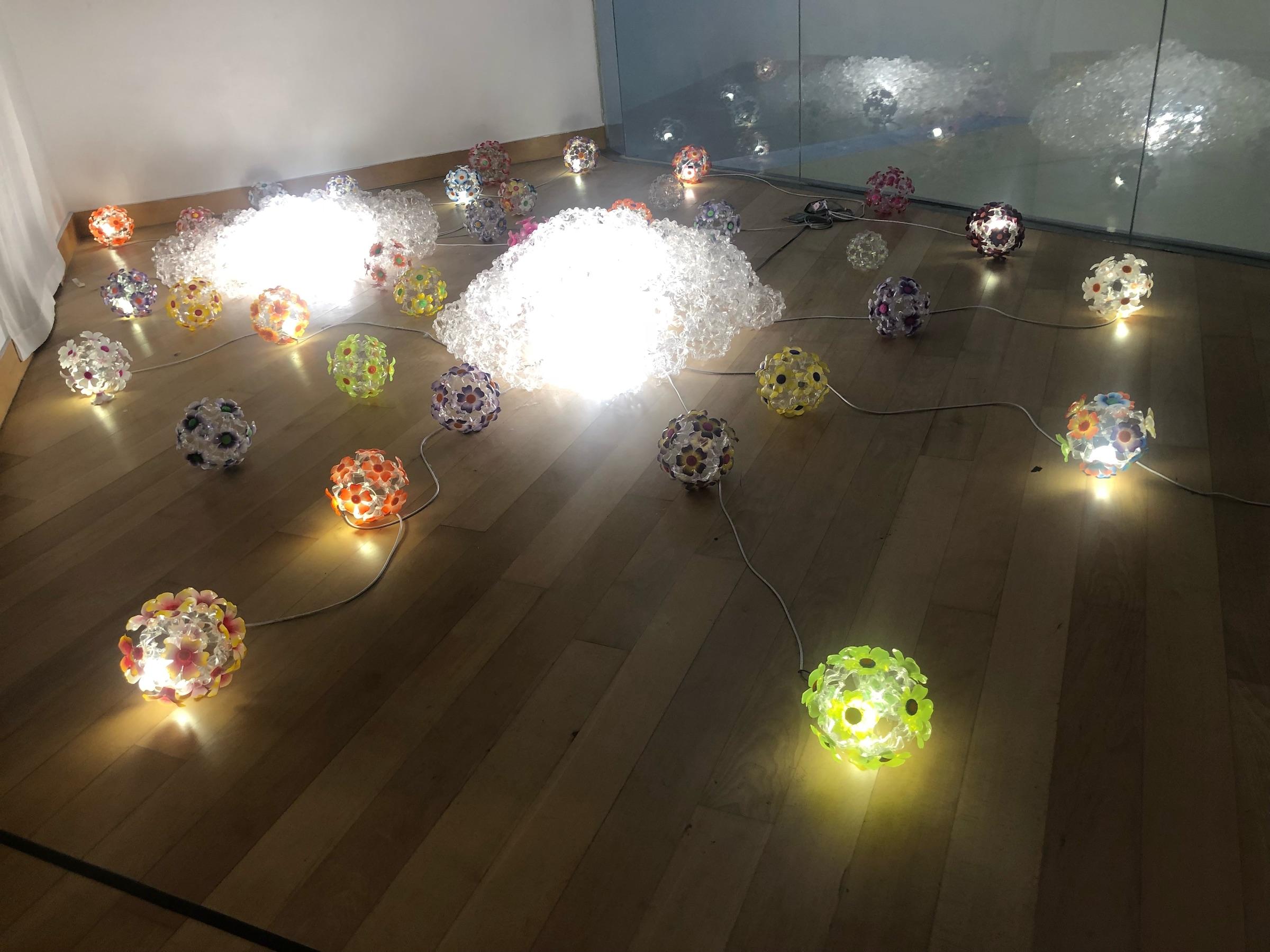
Dubuffet struggled with the question if one can make Art Brut on purpose. Of course, all of these artists meant to create what they created. There was intent and purpose and vision. Still, they never intended for this works to be displayed and seen by the greater public. They were certainly not meant to be sold at a commercial gallery. Once an Art Brut artist is “discovered,” can they continue to create in their pure world once it has been contaminated with outside acknowledgement. Once an outside starts to make contemporary art for a mainstream audience, can they really retain their outsider status?
Silom
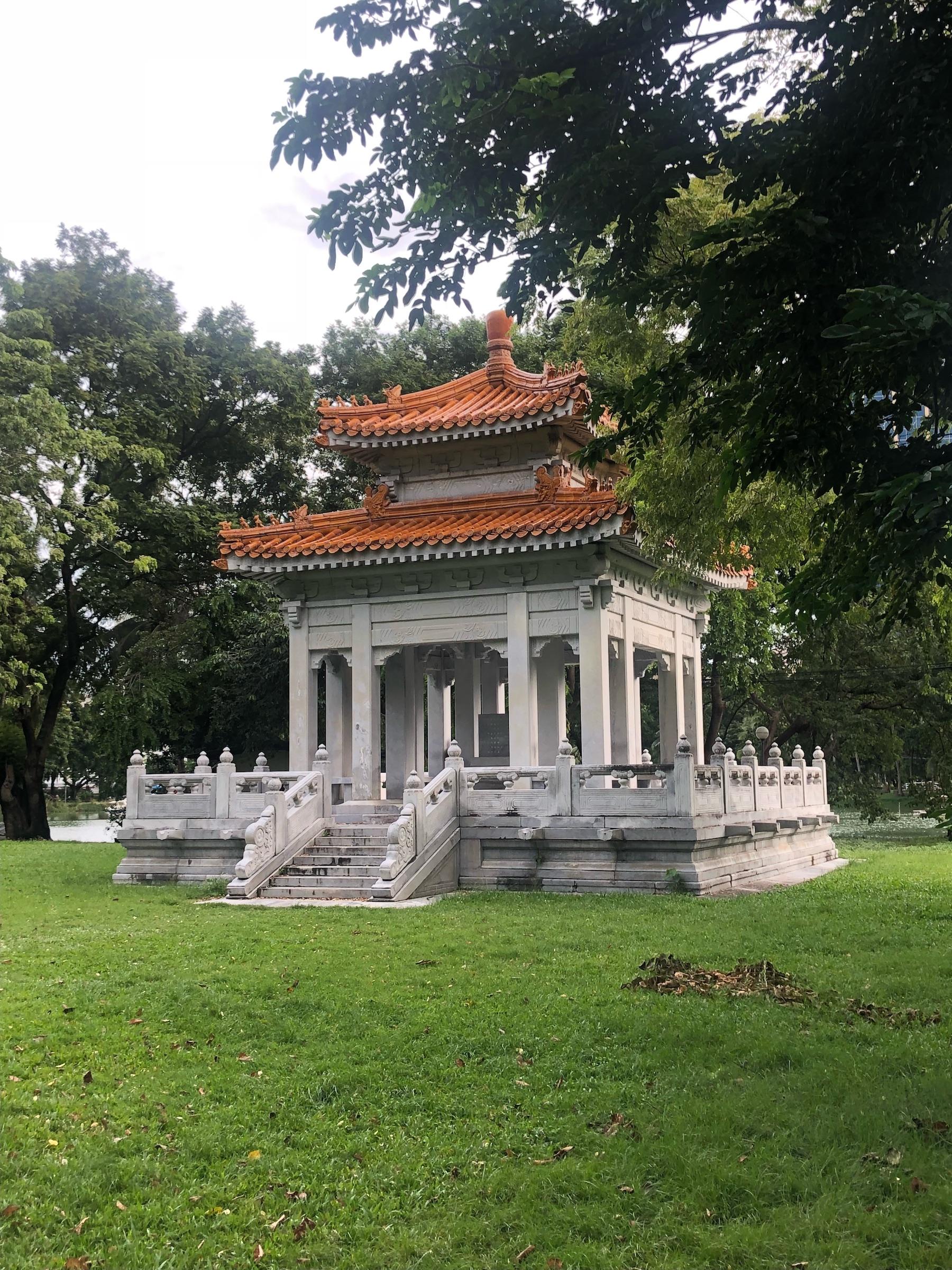
Silom is a swanky neighborhood, home to the “Wall Street of Thailand,” an ex-pat nightlife district and Bangkok’s gay quarter. The residents of Silom have money and aren’t afraid to throw it around. As Thailand established economic ties with the West during the 18th and 19th Centuries, European business set up offices and trading posts in Silom; the word Silom means windmill in Thai, named for the long-since-torn-down windmill a Dutch businessman erected in the district. Most foreign embassies are located in Silom, sitting side by side with wealthy financial institutions; the first skyscraper in Bangkok went up in 1970 in Silom. Still, don’t write off the neighborhood as a boring place unworthy of a visit. Silom has minority Hindu, Chinese and gay communities blossoming in its side streets, as well as sitting adjacent to one of Bangkok’s biggest green spaces, Lumphini Park.
Patpong
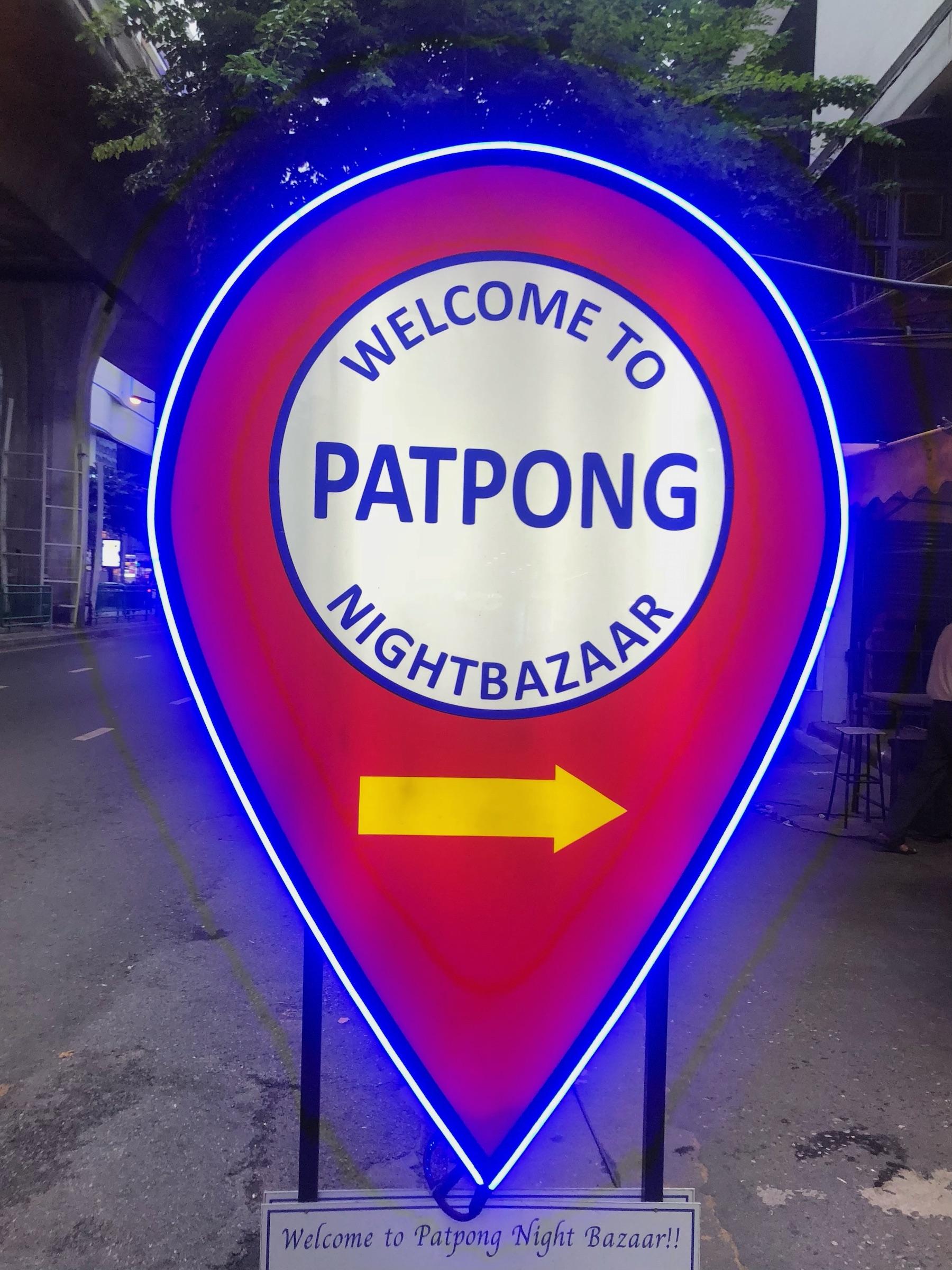
Patpong is the Chinese-owned section of Silom, once notorious for its seedy bars and red light district, catering to the American troops on leave during the Vietnam War. In the 1990s, the Chinese residents opened the Patpong Night Market and the neighborhood was reinvented. Night markets are one of my favorite parts of Southeast Asian culture. As the name suggests, these popular markets come to life as the sun goes down and can run until the early hours of the morning. There is a focus on cheap street food, especially at night markets that see backpackers along the Banana Pancake Trail. Otherwise they sell produce, household odds and ends, clothing, phone cases and assorted souvenirs.
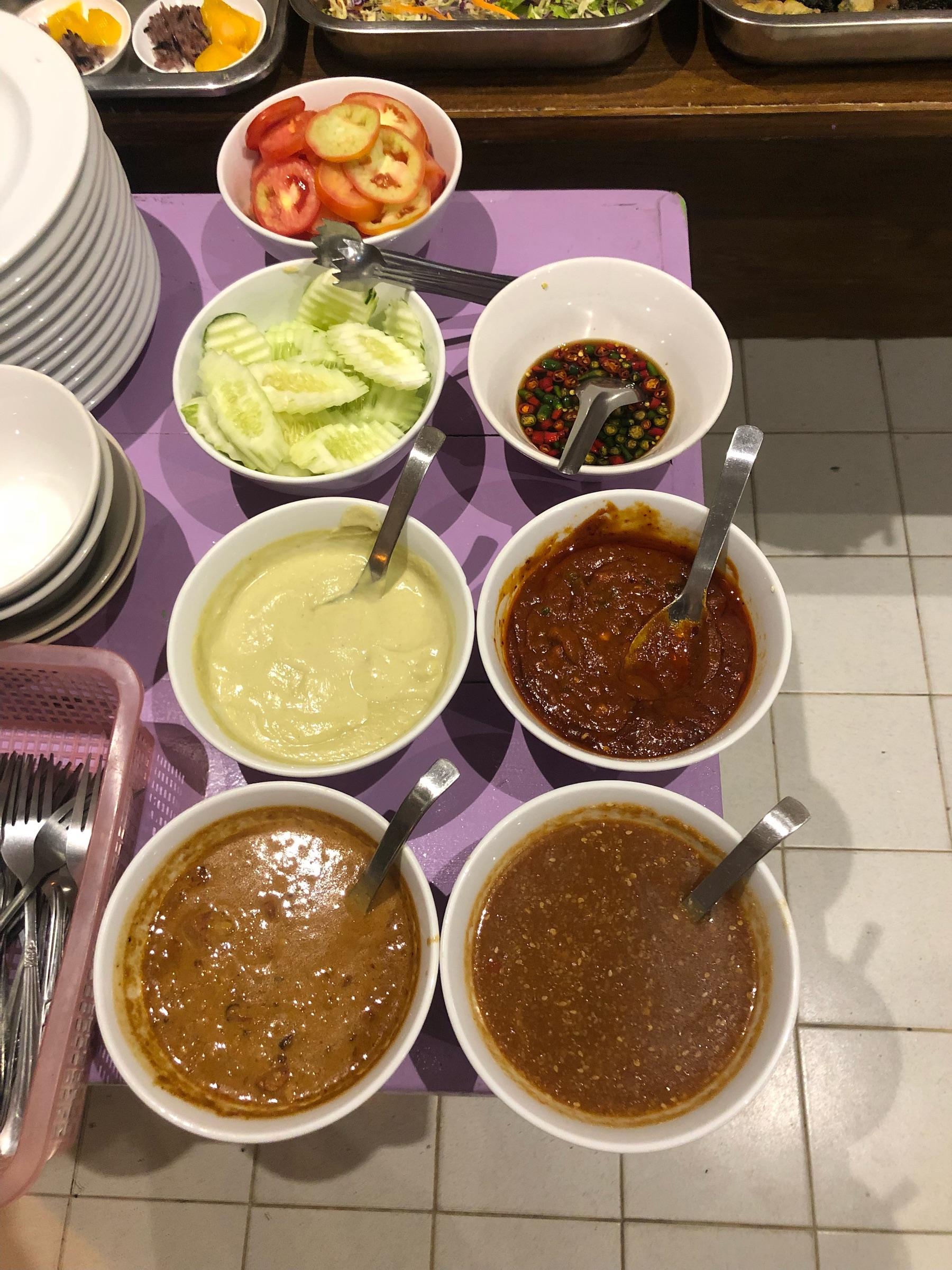
But the real reason to go is the food. Thai food has some of the most delicious (and spicy!) sauces of any cuisine I’ve tasted in my travels. Noodles or rice, stir-fried vegetables and a delectable sauce paring can be yours for a mere dollar or two. These meals are not only cheap, but they’ll fill you up too. Strict vegetarianism isn’t rampant per se, but many Buddhists are vegetarian, or at least they attempt to limit the meat they do eat. Tofu is a common protein substitute and you can find tofu dishes in most restaurants and street food vendors.

Sri Maha Mariamman Temple
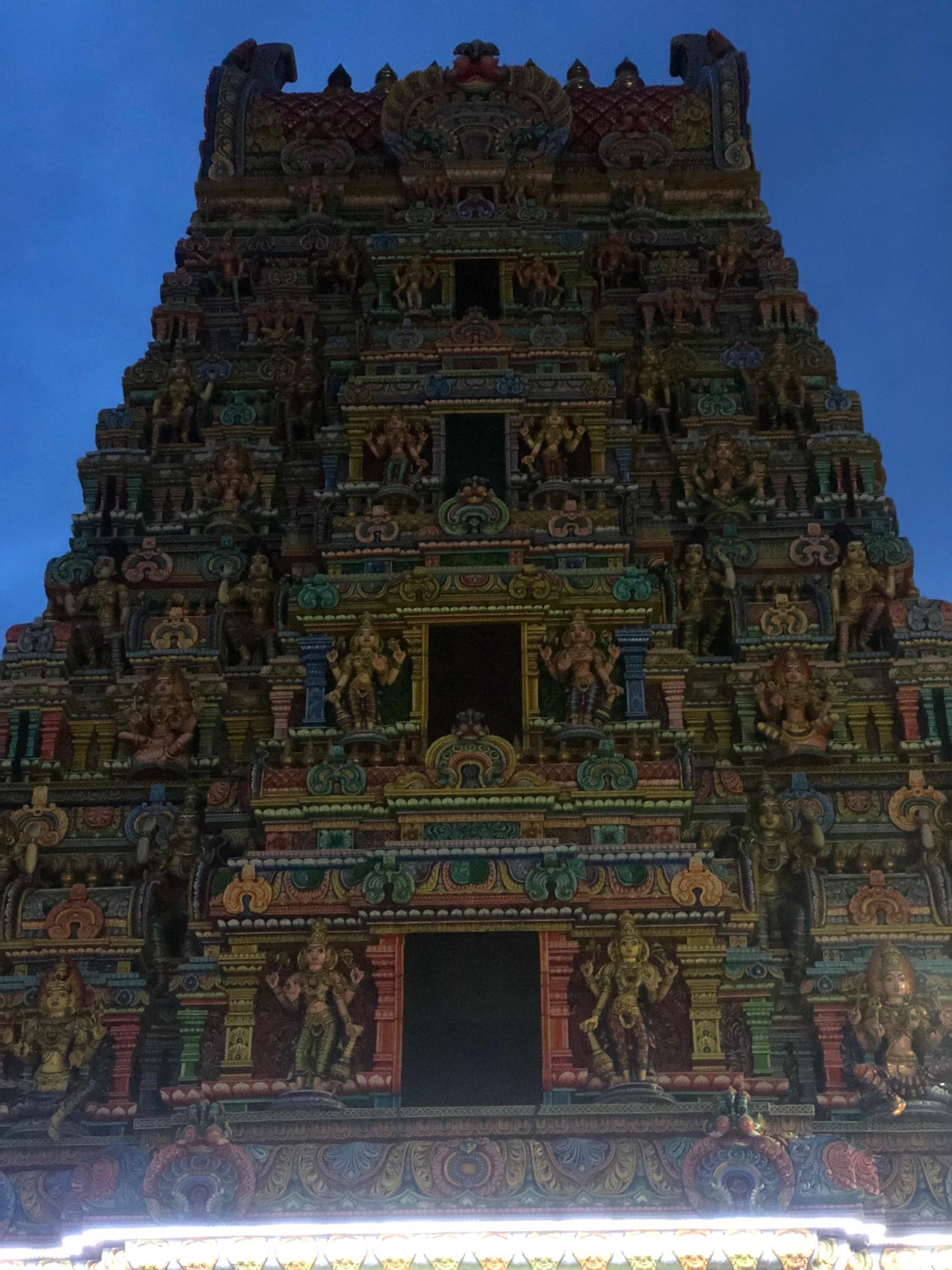
When India became a British Crown Colony in 1858, an exodus of Indian refugees flooded their neighboring countries. Lead by their leader, Vaithi Padayatchi, a group of Tamil Indians settled in Silom and in 1879 they built the Sri Maha Mariamman Temple, the primary Hindu house of worship in Thailand. This 6m (19ft) piece at the entrance to temple depicts a colorful melange of Hindu gods and goddesses.
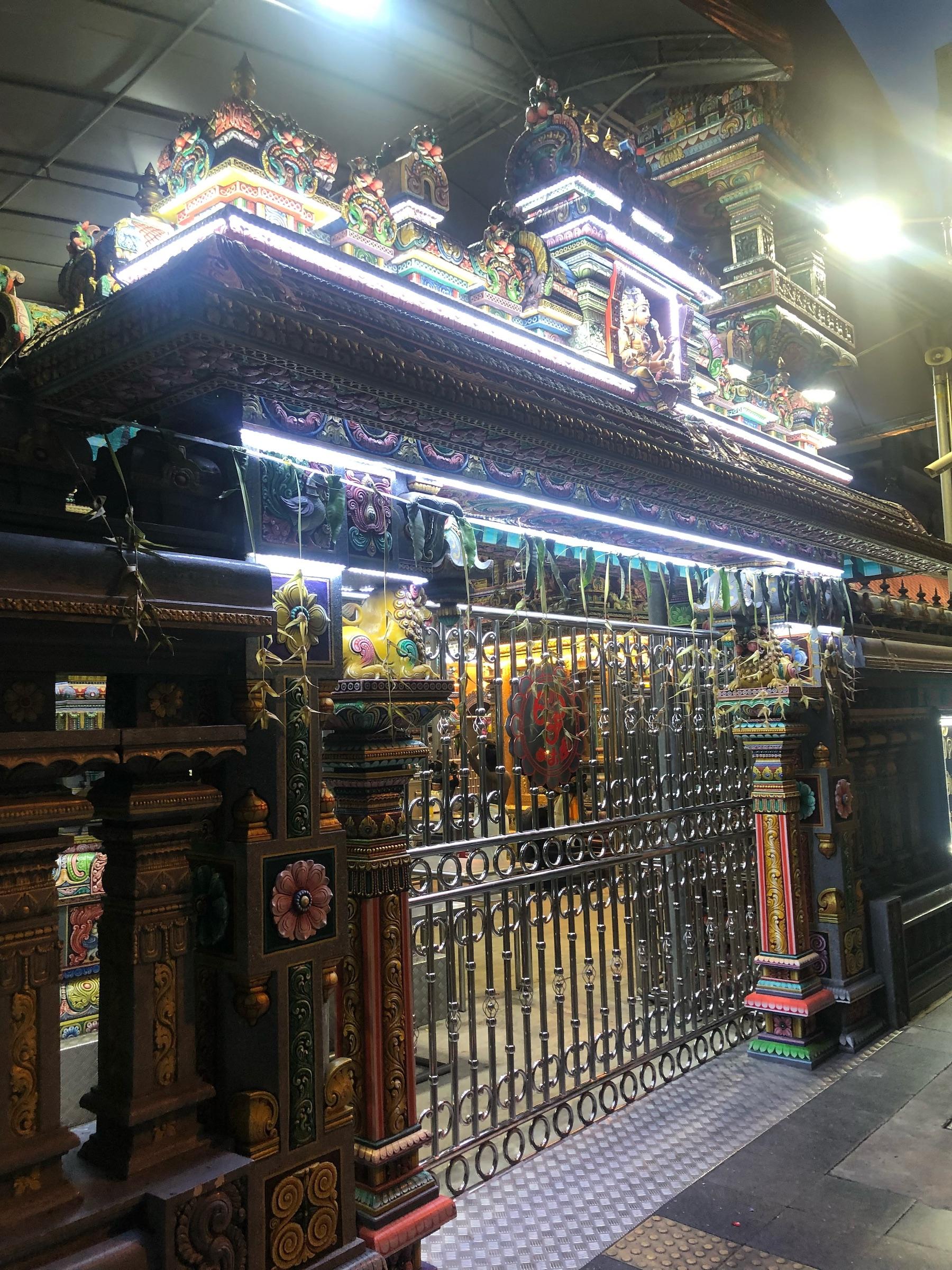
There are about 16,000 Hindus living in Bangkok, but the temple is visited by many Thai Buddhists as well. Hinduism and Buddhism share many common beliefs, including the ideas of reincarnation and karma. The two religions are compatible enough, that locals have found a way to fuse doctrines from both religions together. Many Thai Buddhists will pray to the Hindu gods in much the same way the ancient Greeks prayed to the gods of Zeus and Aphrodite, making offers in return for success in business and good luck with marriage and having children. (The temple is devoted to Amman, Goddess of the Rain. She also cures diseases, causing the ill to make pilgrimages to the holy site in hopes of receiving relief from Amman.)

In many ways, the Hindu Tamil community has integrated well into Thai society. Their religion, by and large, has been embraced by the population and festivals like Navrati, which lasts for ten days and ten nights, are a big deal in Bangkok. And yet the Thai nickname for the temple is Wat Khaek, with khaek being a common word for Indian immigrants, although it more literally translates to “guest.” No matter how well the Hindu population has assimilated into Thai culture, they are still seen as outsiders- guests who don’t fully belong or have overextended their stay. Perhaps not fully meant as an insult, Wat Khaek is occasionally seen as an insult in certain contexts.
Lumphini Park
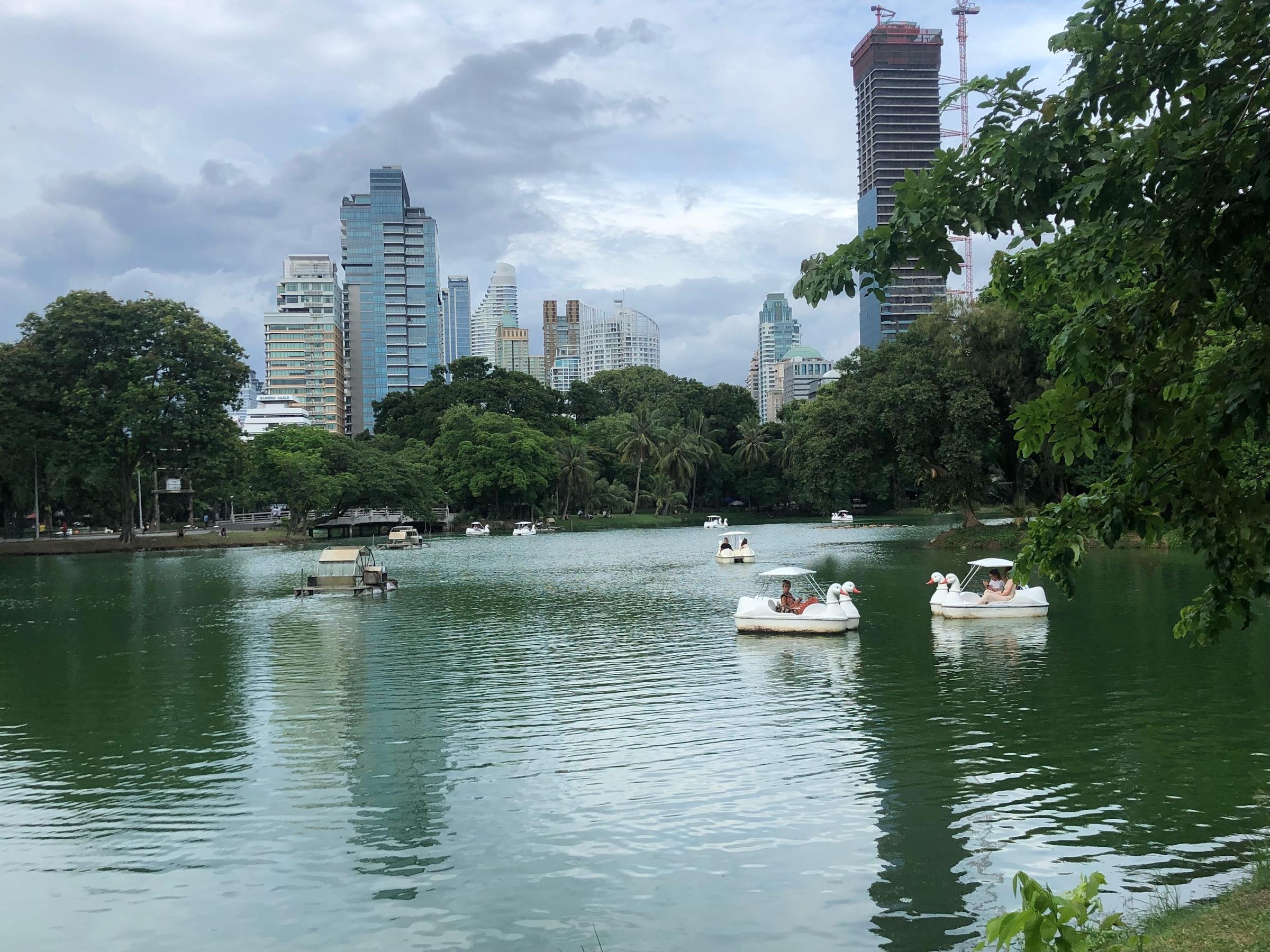
One of Bangkok’s largest parks at 58 hectares (142 acres), Lumphini Park is popular with locals from morning until night. The green space, once the private property of Rama VI, was donated by the king to the city in 1925, making Lumphini the first public park in Bangkok. (The name Lumphini comes from the town in Nepal where the Buddha was born.) The Japanese occupied the park during World War II and turned it into a campground for the soldiers stationed there. After the war, Bangkok’s first public library and aquarium were constructed in the park; the library still stands although the aquarium does not. An artificial lake was created on the grounds and today swan paddle boats can be rented out for a few dollars an hour. You’ll also find little old ladies selling bags of bread to feed the fish in the lake. I joined the children throwing the bread into the water and watching the feeding frenzy begin.

There are numerous monuments and pavilions in the park, each a testament to Thailand’s friendships with other nations. (There is the Italian-Thai Friendship Monument, The Swiss-Thai Friendship Monument, etc.) My two favorites were the Chinese pavilions, one square and one octagonal in shape. Thailand has traded with China seemingly since time began and Chinese immigrants have a firmly-established base in Bangkok, as we will soon see.
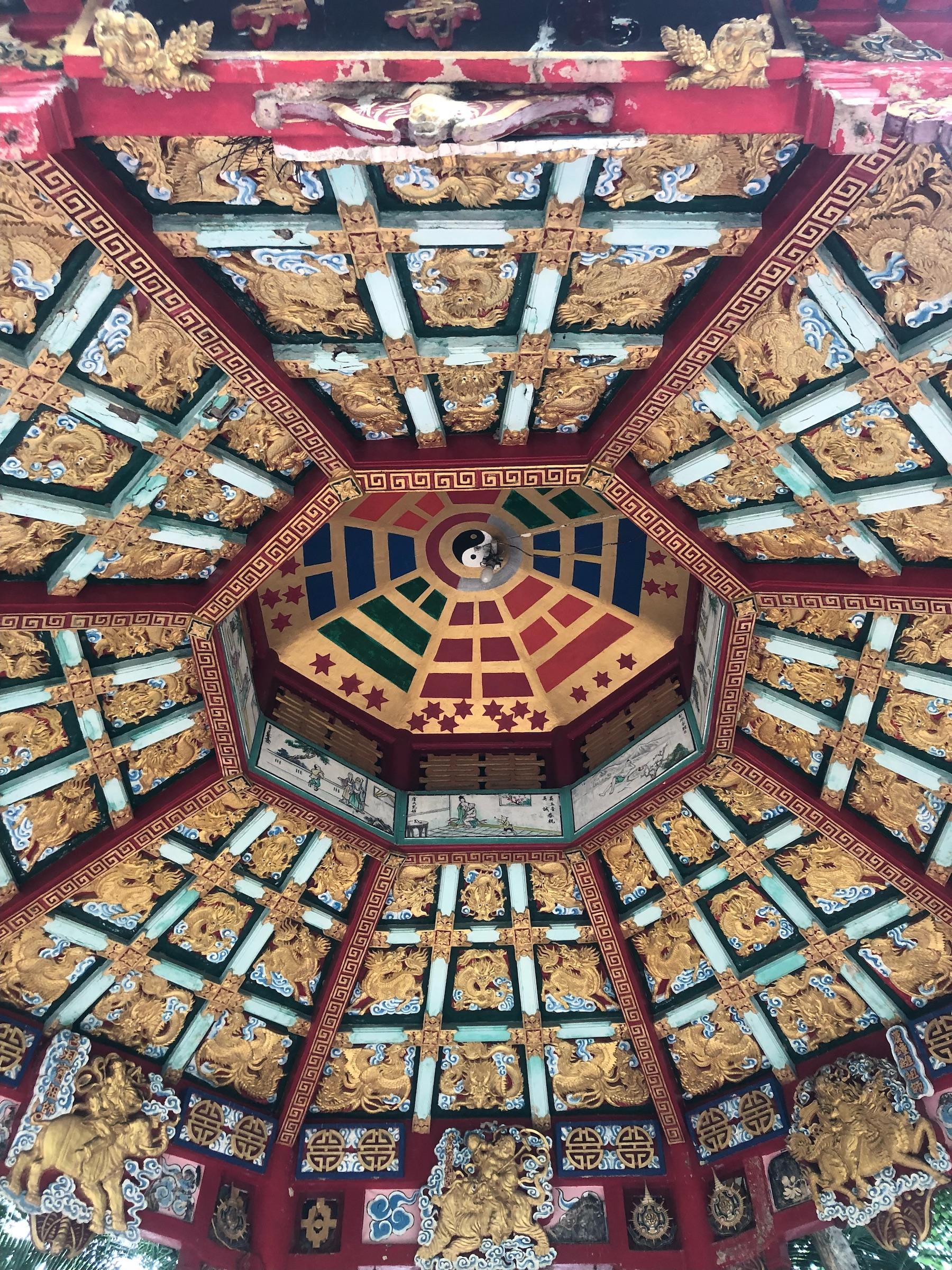

Euah (sometimes spelled Eua) Suntornsanan was a Thai singer, composer and bandleader who lived from 1910-1981 and writing over 2000 songs during his 71 years on this planet. Suntornsanan incorporated elements of Western music into traditional Thai music, creating a new genre he called Phleng Thai Sakon. Due to his contributions to culture and world music, UNESCO posthumously named him person of the year in 2010. And speaking of music, everyday at 8:00 and 18:00, the Thai National Anthem is broadcast over the park’s sound system and you are expected to stop moving and silently listen to the music. I wasn’t exactly sure what was happening at the time (the workers at my hostel explained it to me later), but I simply followed the lead of those around me and stood still.
What I loved most about Lumphini Park were the community aerobics classes that take place every evening throughout the space. (Apparently in the morning, people come to practice Tai Chi, but I can’t imagine that being as entertaining as the upbeat step aerobics at night.) Pop songs and techno thumpa-thumpa fill the air as instructors-cum-drill-sergeants lead anyone with a pulse through their daily dose of cardio. What’s nice is you see people of all skill levels and backgrounds coming together to get healthy, strengthening both their bodies and community bonds. Thai, Chinese, Hindu, Muslim or Jew (yes, there is a small Jewish population, mostly refugees who fled the Soviet Union and found safe haven in Bangkok): all are welcome here.
Chinatown
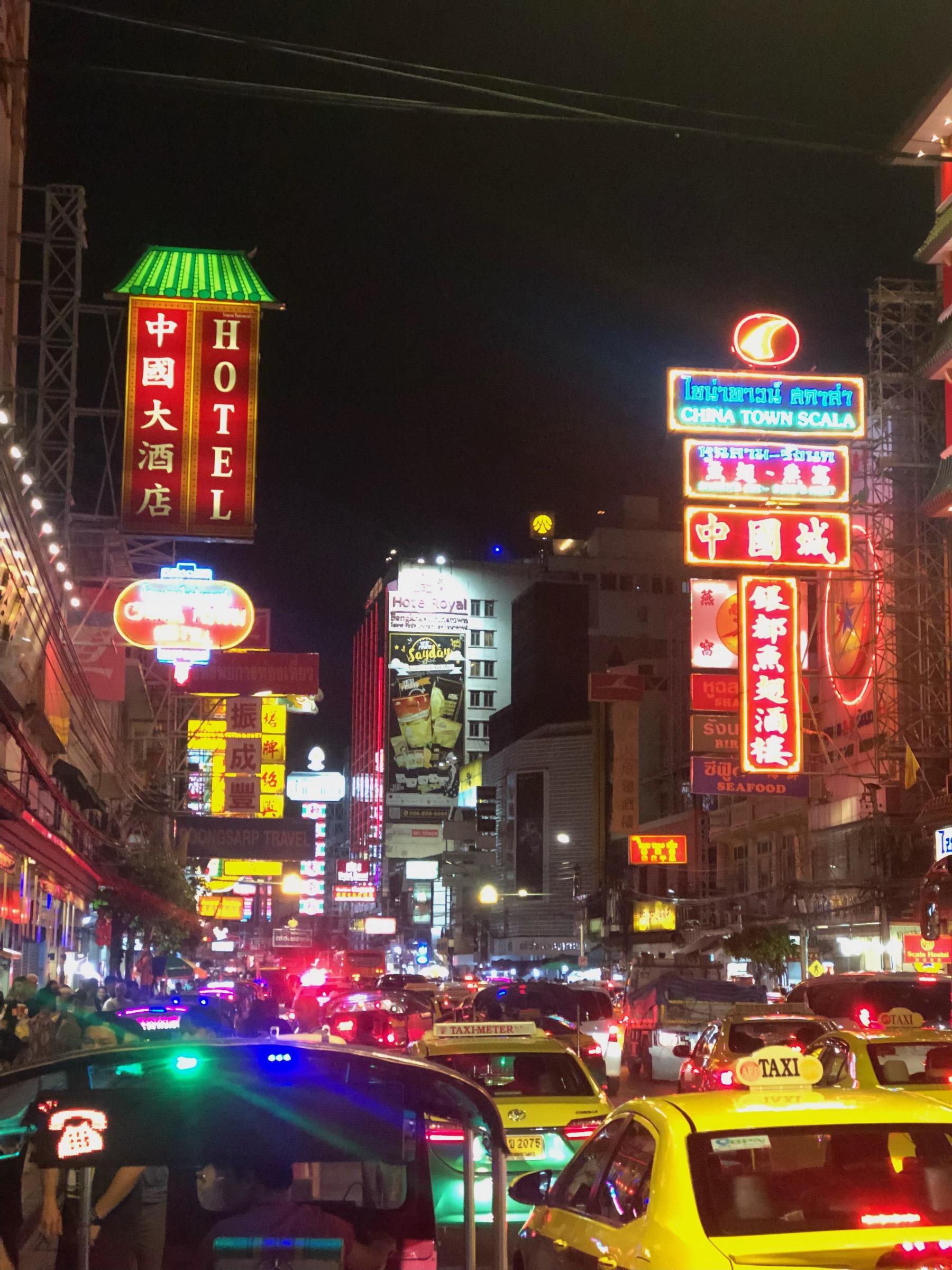
After a walk in the park and a trip to the night market, I found Bangkok to still be wide awake in Chinatown. In the 1700s, drought and famine brought Chinese immigrants to the marshy swamps of Bangkok. Originally these settlers built their homes on Ratanakosin, but after Rama I moved the capital across the river from Thonburi, the Chinese were displaced and given a new piece of land called Sampheng, where Chinatown now thrives. The main thoroughfare, Yaowarat, snakes through the neighborhood like a dragon’s tail, and is lit up like Las Vegas. You will find the odd Buddhist temple in Chinatown, though many of its residents practice Taoism, Confucianism or other Chinese folk religions.

There aren’t so many “sights” to see in Chinatown. In fact, most people come for the street food, lauded as some of the tastiest in the city. Unfortunately, I found the Chinese street food, unlike its Thai counterpart, to be rather unfriendly towards vegetarians. A majority of the dishes are seafood-based, and even the few vegetable entrees on the menu seemed to dosed in fish and oyster sauces before being served. I rarely feel like I miss out on much being a vegetarian on my travels, but this was one time where I felt like I was on the edge of the action looking in.
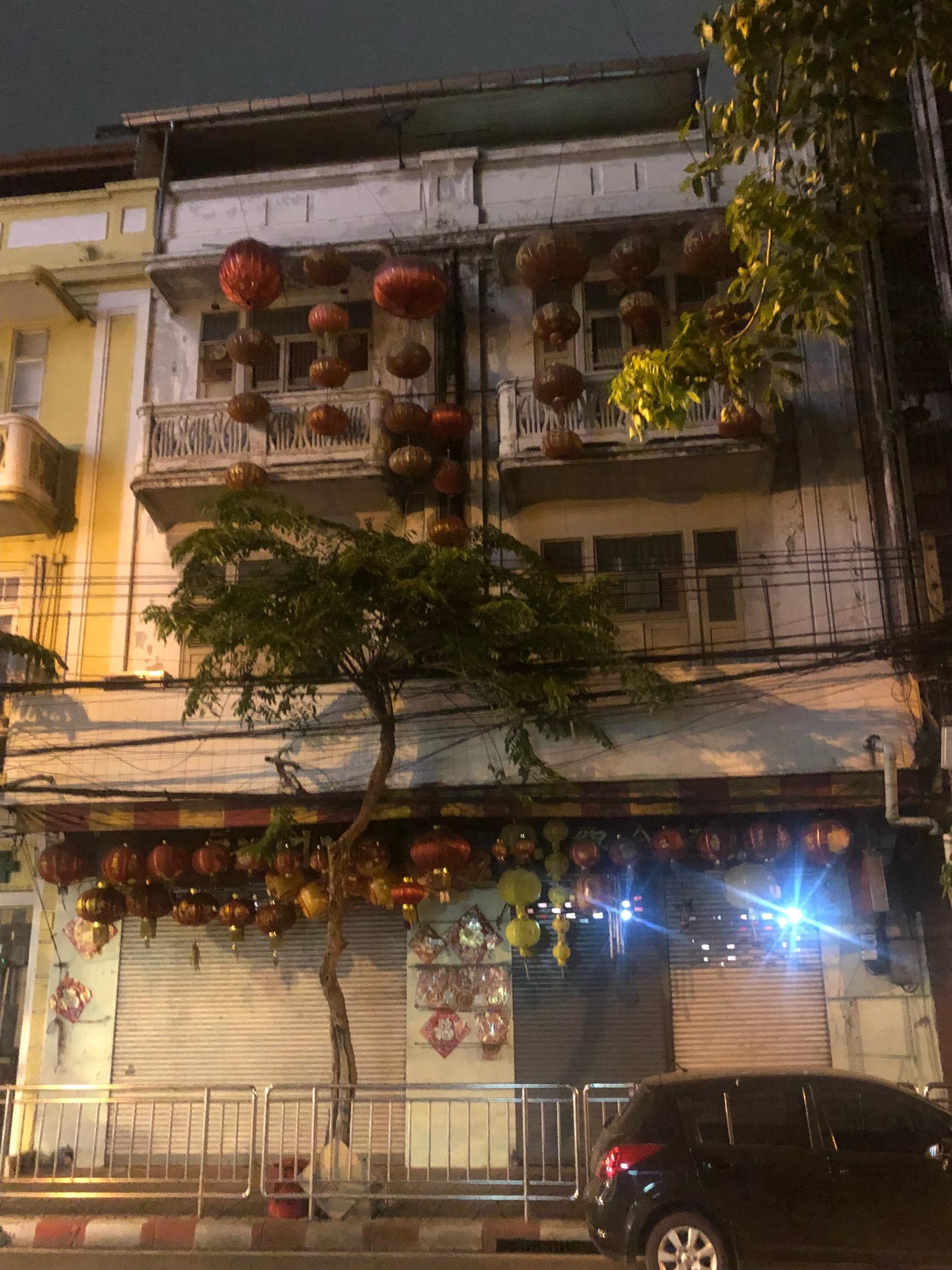
Thailand is full of Buddhist temples, religious art and a population with Thai blood running through their veins, but Bangkok will reveal a more nuanced look at what it means to be a Thai citizen. Outsiders have been shaking things up in the capital, whether that’s through street art and fine silk or Hindu gods and Chinese food stalls, for hundreds of years. Thai culture has adapted to and absorbed theses group, sometimes in spite of itself.
